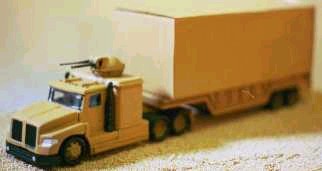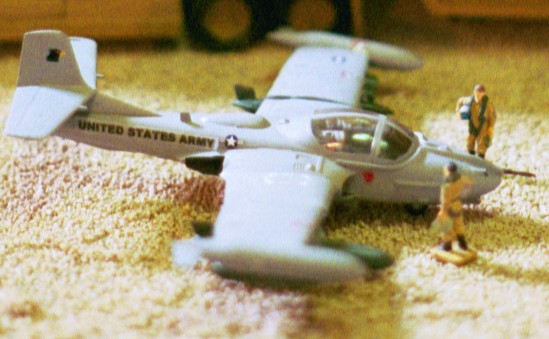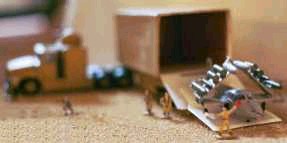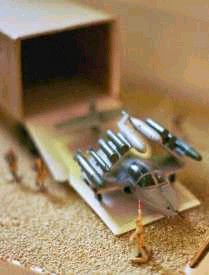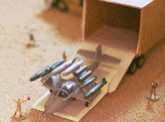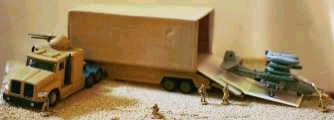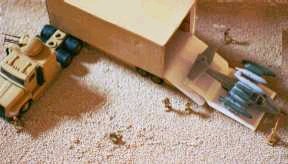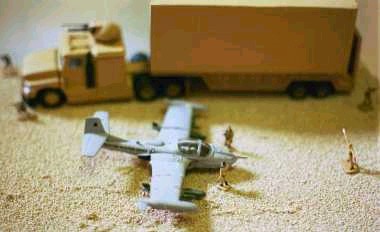CAMIE STICK ALONE IS NOT ENOUGH
The Commandments of Tactical Camouflage
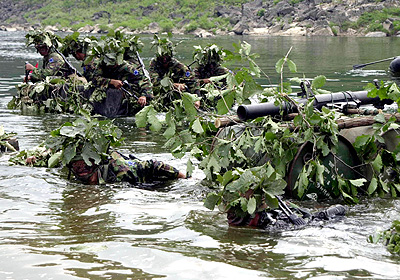
I. Thou shalt not park thy helicopter in the open, for it bringeth the rain of steel.II. Thou shalt not expose thy shiny mess gear, for it bringeth unwanted guests to chow.
III. Thou shalt not wear white T-shirts, or thine enemies will dye them red.
IV. Thou shalt provide overhead concealment, for thine enemies' eyes are upon thee.
V. Thou shalt cover thy tall antenna, for fly swatters groweth not in yon wood.
VI. Thou shalt use a red lens on thy flashlight, or it shall appear as a star in the East.
VII. Thou shalt cover the glass on thy vehicle, for the glare telleth thine enemy thy location.
VIII. Thou shalt blend with thy surroundings, for trees groweth not in yon desert.
IX. Thou shalt cover the tracks of thy vehicle, for they draweth pretty pictures.
X. Thou shalt cover thy face, hands, and helmet, for thine enemies maketh war not on bushes.
XI. Thou shalt not drape thy net on thy tent, for it looketh like tent draped in net.
XII. Thou shalt hide the wires of thy commo, for they pointeth to thee.
XIII. Thou shalt practice the art of dispersion, or one round will finish you all.
XIV. Thou shalt pick up thy trash and litter, for they exposeth thy presence.
XV. Thou shalt conceal the noise of thy generator, for thine enemies are listening.
Original article Wednesday, October 11, 1995
THE FORT BRAGG POST
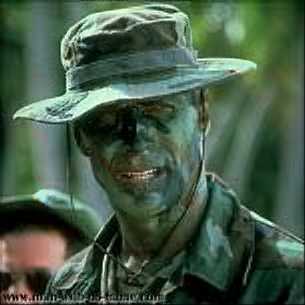
Camouflage bad:
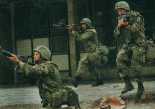
Here, these jarheads in Kosovo were photographed "reacting" to a sniper. What camouflage/common sense rule are they NOT following?
IRAQ, 2003: 12 YEARS AFTER DESERT STORM, WHY DID WE SEND IN THOUSANDS OF MARINES/SOLDIERS IN THE WRONG CAMOUFLAGE UNIFORMS? (Rumsfeld: "you go with the Army you have, not the one you wish you had")
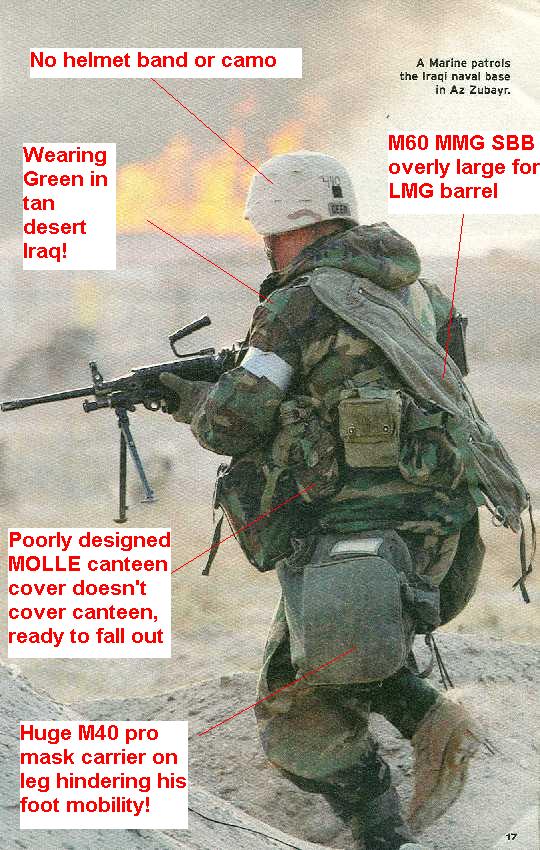
The Army "we had" back in 1991 had the right color camouflage uniforms. Why 12 years later they were not prepared knowing at some point we'd have to return to Iraq? How many men died because they have been so easy to pick off wearing GREEN in desert tan Iraq?
BOSNIA, 1995: REAL WORLD NEEDS
A U.S. pilot is downed deep in Serbian-controlled Bosnia. He executes an evasion and recovery plan ("E & R") using his SERE (Survival, Evasion, Resistance, Escape) level "C" training he received as an air crewman-which every U.S. marine/Soldier should have but doesn't. A squadron mate in a F-16 Fighting Falcon Flies over and CPT Scott O'Grady radios to him for help. A scratch rescue force of marine infantryman hop on board helicopters and extract him from an open cow pasture; outbound to their amphibious assault carrier, two surface-to-air missiles and extensive small arms are fired narrowly averting another marine corps piloted flaming tragedy akin to "Desert One" in 1980. Had the LZ turned into a flaming cauldron, Paratroopers of the Airborne Combat Team in Vincenza, Italy would have had to jump in as depicted above from Panama, and rescued the "rescuers".
Had these rescuers been forced to "E & R" like Cpt. O'Grady, how well could they have evaded detection? Judging from the Newsweek June 19, 1995 photos (by Peter Turnley from the U.S.S. Kearsarge) on pages 26-29 taken prior to departure, not well; neither their hands or faces were even close to being camouflaged by face paint and their load bearing equipment and helmets were untouched. Civilian water-based hunter's camouflage paint that runs off easy were improperly used instead of resilent G.I. face paint. Even what was put on was in the wrong patterns to break the face's outline up and in general not enough---bare skin and hands all around. No camouflage helmet bands or burlap straps on any TA-50 or helmets to break the outline up. Metal rifle sling swivel/hardware not taped or silenced. Some McGrunts wearing flimsy civilian prescription galsses that are likely to break at a critical moment. Bare metal showing on TA-50, PASGT Kevlar(c) flak jacket's snaps and hardware, not even painted over. No night sights on weapons in case the rescue goes bad and they have to fight it out into the night. One McJarhead had "550 cord" tied to his front side post to his rifle which if actually fired would get hot, melt, and break. They wouldn't have even passed the Army's Expert Infantryman's Badge (EIB) camouflage station, let alone a Serbian infantryman fighting in the region for years. We "dodged a bullet" here. More proof that you "fight as you train". And the pictures from Kosovo show nothing has changed 4 years later!
AFGHANISTAN, 2002
The recent After Action Reviews of Afghanistan combat by the 10th Mountain Division reveal the enemy is using blankets to provide camouflage to hide from American firepower:
"The enemy moved in small groups of three to five fighters, making them hard to spot. "During the daylight, we watched them on the Predator," Hagenbeck told Field Artillery. "At night, when these groups heard a Predator or AC-130 coming, they pulled a blanket over themselves to disappear from the night-vision screen. They used low-tech to beat high-tech."
FORT LEWIS, 2005
"From Here to Eternity" Garrison U.S. Army Unready For War: As Seen From Space
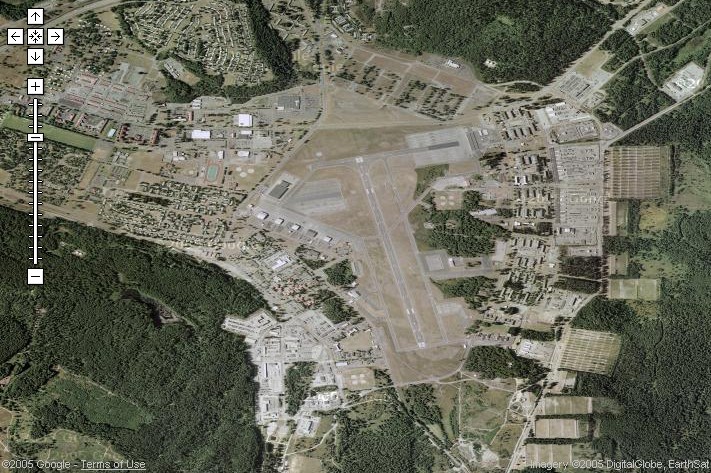
James Jones, an Army combat veteran revealed the bankrupt and snobby Army culture as being unready for WW2 in his book; "From Here to Eternity". As Japanese planes are bombing and strafing U.S. Navy ships and Army/marine planes parked in neat rows to ward off "saboteurs" our entire force in the Pacific was nearly wiped out resulting in us almost losing the war on day 1. Despite the obvious need to drop the rank snobbery, work together and stop the non-tactical "parade ground" military, after WW2 we reverted right back to "From Here to Eternity" and suffered grievous losses in Korea, Vietnam, and now in Iraq. We are today, parking both ships, planes and trucks, troops, tanks and buildings in easily targeted rows, both in CONUS and overseas.
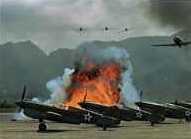
On the 21st century, non-linear battlefield dominated by high explosives we simply CANNOT afford to play BS barracks games and keep living in rows of buildings with our air, ground and sea platforms parked in rows, uncamouflaged.
If you have ANY doubt about the dangers we face of reliving "Pearl Harbor" which we compound by base closures compressing even more targets in smaller areas, look at the satellite imagery of U.S. bases using google maps.
1. GO TO
2. Type in
fort lewis wa
you will see a street map
3. Click on "Satellite"
Click on + to zoom all the way in on to see the clusterfucks of Stryker and other wheeled trucks
Move <--- and ---> to shift view from space to keep the wheeled truck narcissist wagons in view etc.
Here's the photo of Fort Lewis, Washington taken from space by a satellite with key features of the U.S. Army "garrison" BS mentality explained:
1. HUGE parade ground for brass to self-worship themselves with troop standing in hot sun for hours at a time. Troops have to waste hours mowing this huge lawn. Parade grounds and useless golf courses should be ripped out of every Army post and the space used for tank cross-country open terrain maneuver training or at the very least a firing range. You will notice there is no maneuver training area on Fort Lewis--they have to drive over 100 miles southeast to Yakima training center--more time and resources wasted, when we do not have the time or the money to waste.
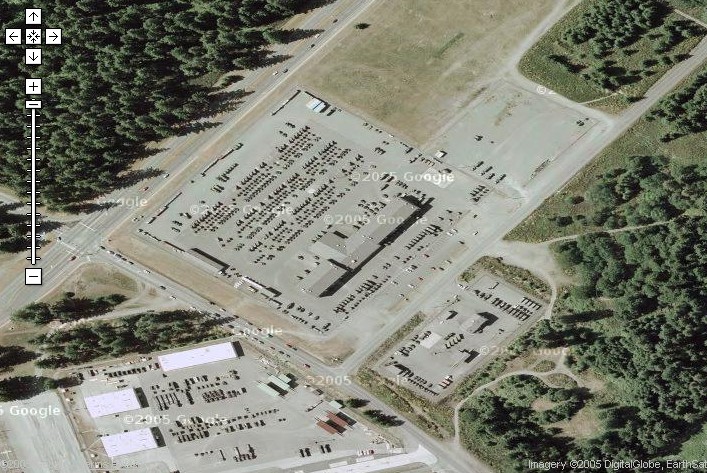
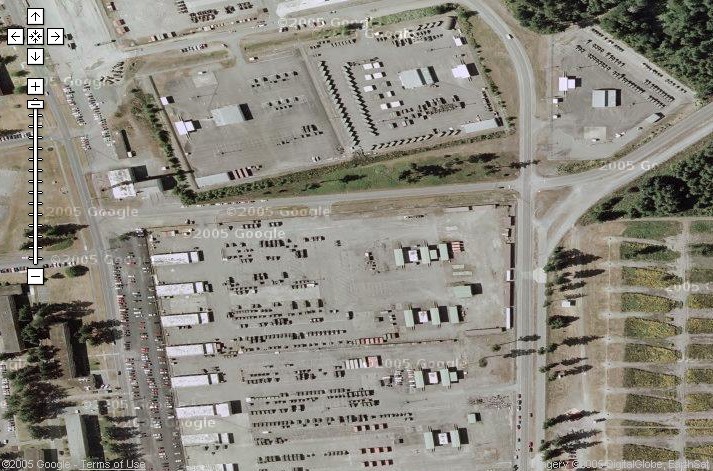
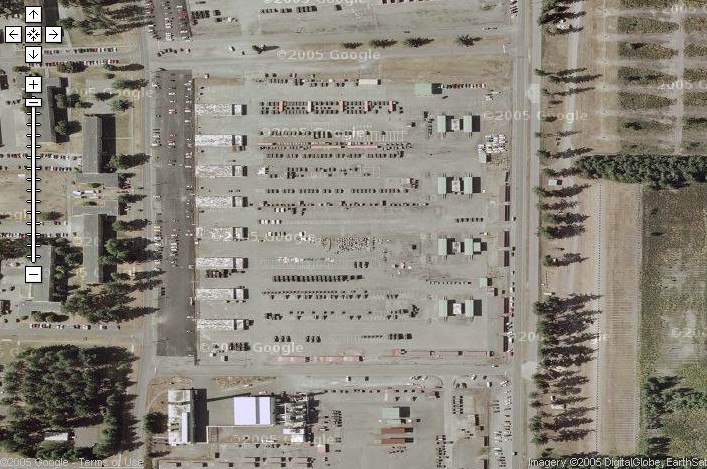
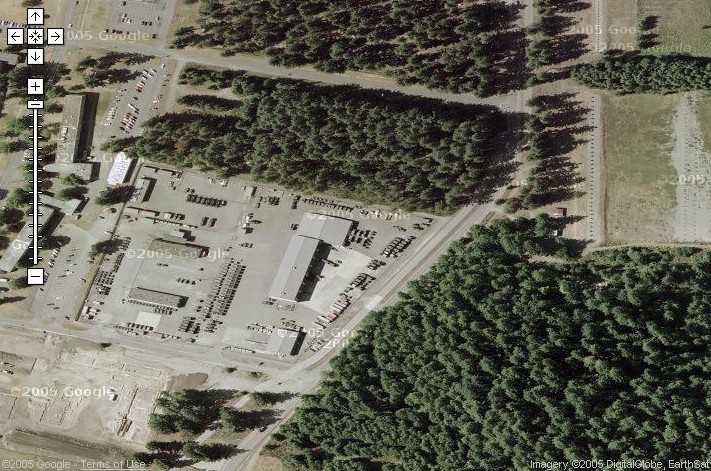
2. HUGE motor pools of Stryker, Humvee and FMTV vulnerable wheeled trucks in Fulda Gap Olive Drab Green paint that makes them clearly seen against gray pavement. Troops waste many hours obsessing over these flimsy and tactically unsound trucks under the hot sun to micro-manage and alleviate the anxieties of the brass and their bean counters that they will work. However, the hot sun and temperature elements are degrading the rubber tires, optics, paint constantly.
So as mother earth kills the life of these flimsy vehicles, they make an easy Pearl Harbor-esque target for enemies who could with GPS guidance destroy them en masse with just a few direct hits. ALL vehicles should be painted in universal TAN or BROWN and dispersed and co-located with their units in the field at all times under concealing vegetation and/or nets to keep the sun off, or better yet IN ISO containers. Some "war on terror" we are waging, huh? We didn't declare war on 9/12/01 and we are still not at war.
3. You will see 5 x CH-47D Chinook heavy lift helicopters and a UH-60 Blackhawk helicopter again in absurd "Fulda Gap" green camouflage paint making them easy targets on the ground and in the air. These aircraft should be GRAY for effective camouflage in the air and be covered in camou nets on the ground. The main runway of Gray Army airfield is only 6125 feet x 150 feet and the secondary runway is only 1867 feet by 46 feet. This is good enough to fly-away by USAF C-17s and C-130s, but the Stryker truck is too heavy to fly by C-130 even stripped down anywhere unless you want to go to Spokane, Washington. Only 3 Strykers can fit into a C-17 which we do not have many total, and only a squadron of 12 at nearby McCord AFB. If the Army were wise and transferred Stryker trucks to MP units where their road-bound fatal weaknesses would be offset by a less lethal mission and re-equipped with M113 Gavin and M8 Buford AGS light tanks, they could fly 4-5 at a time in C-17s and 1-at-a-time in C-130s to strategic distances (over 1, 000 miles). Moreover, if the main runway was lengthened to over 8, 000 feet, cargo 747s could fly brigade Gavin/Buford sets and all required personnel rapidly to any place in the world with international airports. This was what an Army that was serious about getting ready to fight anywhere in the world would do.
4. Here you see a feel-good sports field and 400 meter tracks for absurd sports PT in t-shirts, shorts and running shoes which has no combat relevance. Also notice the tennis courts. More evidence that the U.S. military garrison lifestyle is all about narcissism and not combat effectiveness.
5. Here you see the comfortable Rank Hath Its Privileges (RHIP) officer's housing adjacent to the parade ground for narcissist ceremonies. This is disgusting and not leadership-by-example. These housing units should be torn down on all U.S. military posts/bases and everyone made to live off post in REAL civilian houses to have real civilian cultural lives instead of living in the cloistered artificial lifestyle that leads to snobby and disrespect of people with less money, rank and status--people like our foreign enemies and civil populace that we are trying to win to our side. Amerocentric snobbery does not win hearts & minds.
6. All over the post are multi-story troop barracks and enlisted family housing units where the underclass lives and the under 21 year olds can be frequently visited by their over-bearing "mother may, I?" chain of command to nitpick over the condition of interior paint and the state of the lawns around the buildings. So while America's enemies study how to kill us with the latest technologies, our troops spend their days picking up trash and mowing lawns in the hot sun or freezing cold after starting the day without enough sleep doing absurd sports PT to numb them down to better control them and remind them that they are somehow inferior to the careerist narcissists running the show who want to look good and get themselves promoted. Is it a wonder troops think 5-ton trucks weigh 5 tons? Is it a wonder they do not know what a RPG can or cannot do? Is it a wonder our troops are ignorant of warfare and think they can ride around in wheeled trucks and just shoot the enemy as if it were a TV western gun duel? The sad truth is they enter the combat zone sleep-deprived for months and years at a time and are falling asleep at the wheel and dying. They are getting blown up by a push of a button by roadside bombs before they can even get a chance to shoot their hand weapons. War is not an event to prove manhood and adulthood you should already have, its not a game or a duel. Its about winning or losing, living or dying. And we cannot afford any longer to waste time on 19th century parade ground BULLSHIT on today's lethal, non-linear, 4th generation warfare battlefields dominated by not just bullets but high explosive weaponry.
Let's be brutally honest, shall we?
Where is the constructive effort to be good at warfighting?
U.S. military is not "AMATEUR hour"; amateur implies at least we are TRYING; we are not trying; U.S. military is PHONY. Its a BUREAUCRACY of lemmings who give the boss the lies he wants; not a PROFESSION of experts who act on FACTS and CONSCIENCE.
Air Force & Navy when they fly aircraft and sail ships are kept somewhat honest and combat capable because if they at any second fail they can be dead falling from the sky or in the water where man really doesn't live. To warfight they need to actively operate air/sea platforms.
In contrast in land combat, man lives on land; he does not need a platform to exist on land that automatically has a war function. He is under no compulsion to be combat ready even by platform default. Man can die on land from EXPOSURE however, and since he lives on land all the time for a peaceful, civilian life his answer to this is FIXED BUILDING SHELTER. Since man has a civilian existence means that has no military platform utility, both the Army and marines have been corrupted by building and lawn care as convenient excuses/time wasters by people who are phonies who do not want to be combat ready, they want to be phony narcissist snobs and extended adolescents paid middle-class wages.
Actives: wake up each morning sleep-deprived, roll call troop formation, do non-sense sports PT, then breakfast, some more troop formations, "leaders" meetings, paperwork, Mondays wasted in motor pool doing PMCS on tactically unsound Humvee SUV trucks, Tuesday/Wednesdays building and lawn care, Thursday meetings, Friday paperwork. WHERE IS THE TIME TO DO ACTIVE WARFIGHTING EXCELLENCE? The entire daily and weekly routine established by the narcissist egomaniacs to baby sit the economic weak co-dependants is geared around BULLSHIT (lawn and building care) not active thinking cat vs. mouse warfighting.
www.combatreform.org/sleeplessarmy.htm
Reserves: one weekend a month they arrive and waste Saturday and Sunday with roll call formation, sports PT then lunch, then yadda yadda meetings, then time to go home for the day. Two weeks in summer is fun time away from wife and kids.
Solutions
1. Get rid of static buildings: force ground troops to every day do combat things by making them live every day in tactically-sound, portable, fortifiable "BATTLEBOXES TM" THERE IS NO GARRISON. There is only the FIELD.
www.geocities.com/strategicmaneuver/battleboxconcept.htm
www.geocities.com/strategicmaneuver/battleboxes.htm
2. Make Reserves go to war for 24 hours each month
www.geocities.com/paratroop2000/realreadyreserve.htm
3. Get rid of phony narcissists and economic bennie boomers and replace with warfighter enthusiasts
www.geocities.com/paratroop2000/weakcodependantarmy.htm
4. Cat & Mouse Warfighting Experimentation Needed
www.combatreform.org/cluelessarmy.htm
Once we cut out all the BULLSHIT we will face the tools we have in front of us and start grappling with how we will use them in war and how to better use them by ACTIVE THOUGHT. Force everyone to FACE THE TOOLS THEY HAVE IN FRONT OF THEM their minds will be forced to THINK about what it is they have. FORCE THEM TO BE IN A WAR SETTING AND THEIR MINDS WILL PONDER hey, what if I left on foot over there to patrol and an enemy sapper team is already there?
The same intellectual development and innovation that I undertake will happen with the troops, what we call FIELD CRAFT. How can you have FIELD craft when you are NOT IN THE FIELD--but in garrison doing LAWN CARE?
A few examples:
Drive vehicles and lay smoke screens with OPFOR to perfect what it takes to evade optical weapons engagement
Off-road, x-country driving of TRACKED armored fighting vehicles to avoid roadside bombs/RPG ambushes
Finding out how to hide vehicles from thermal imagery
Shoot actual soft nose RPGs at vehicles and practice evading them
Actual hardening of combat vehicles and loading arrangements perfected not static BS "this is the SOP we've always used so go back to sleep"
The Ecotat TMP and LWSB-MP could also be used as instant camouflage in the same manner by U.S. forces as the Taliban and al Queda terrorists! IF WE ARE SMART ENOUGH TO SEE THESE ITEMS IN THIS WAY!
However, we must realize that WE ARE ALWAYS UNDER SURVEILLANCE and to start using our own Camouflage, Cover, Concealment, Deceit and Deception (C3D2) ALL the time, 24/7/365 to include where we wrongly ASS U ME we are safe back in the U.S.
WHAT WRONG LOOKS LIKE
Individual Soldiers
Bad Camouflage in Afghanistan
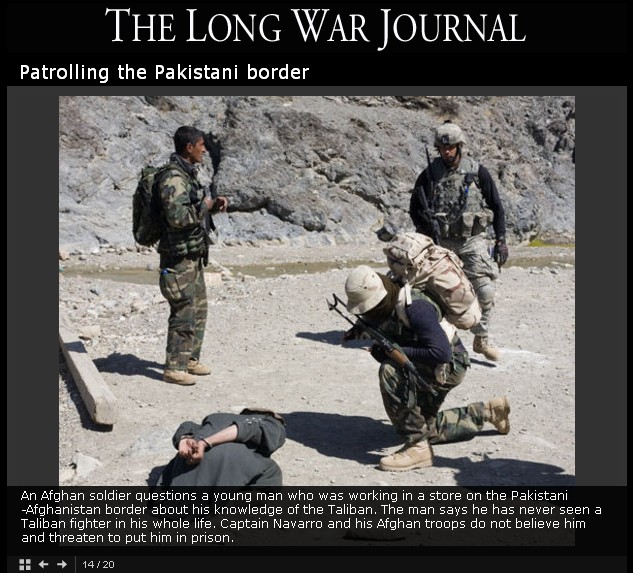
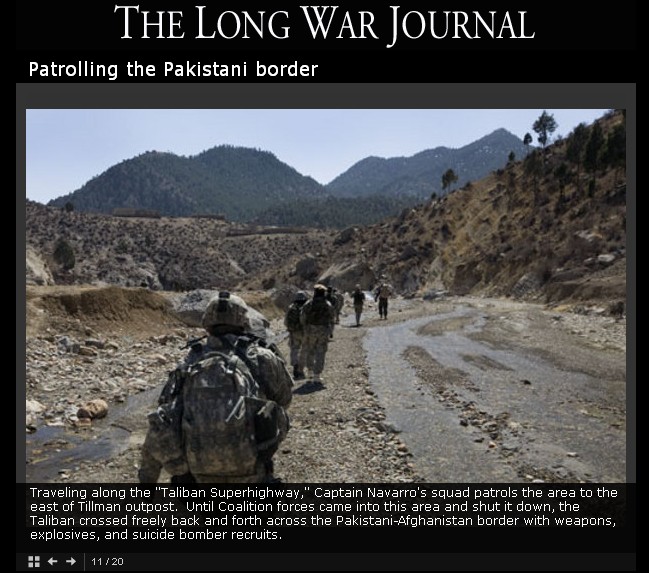
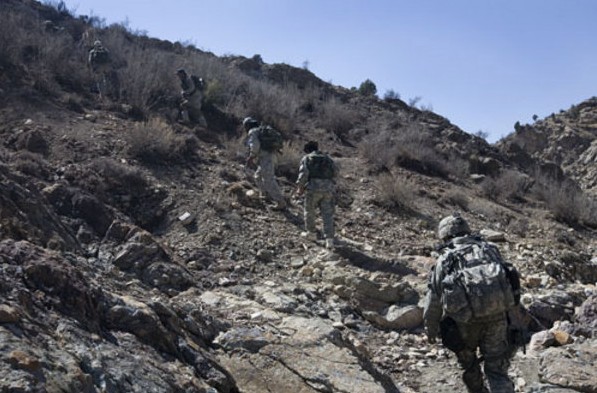
 www.youtube.com/watch?v=1wCWiWDELrA
www.youtube.com/watch?v=1wCWiWDELrA
Units of Soldiers
 www.youtube.com/watch?v=ekUSOVAMah0
www.youtube.com/watch?v=ekUSOVAMah0
LET'S DO IT RIGHT STARTING NOW!
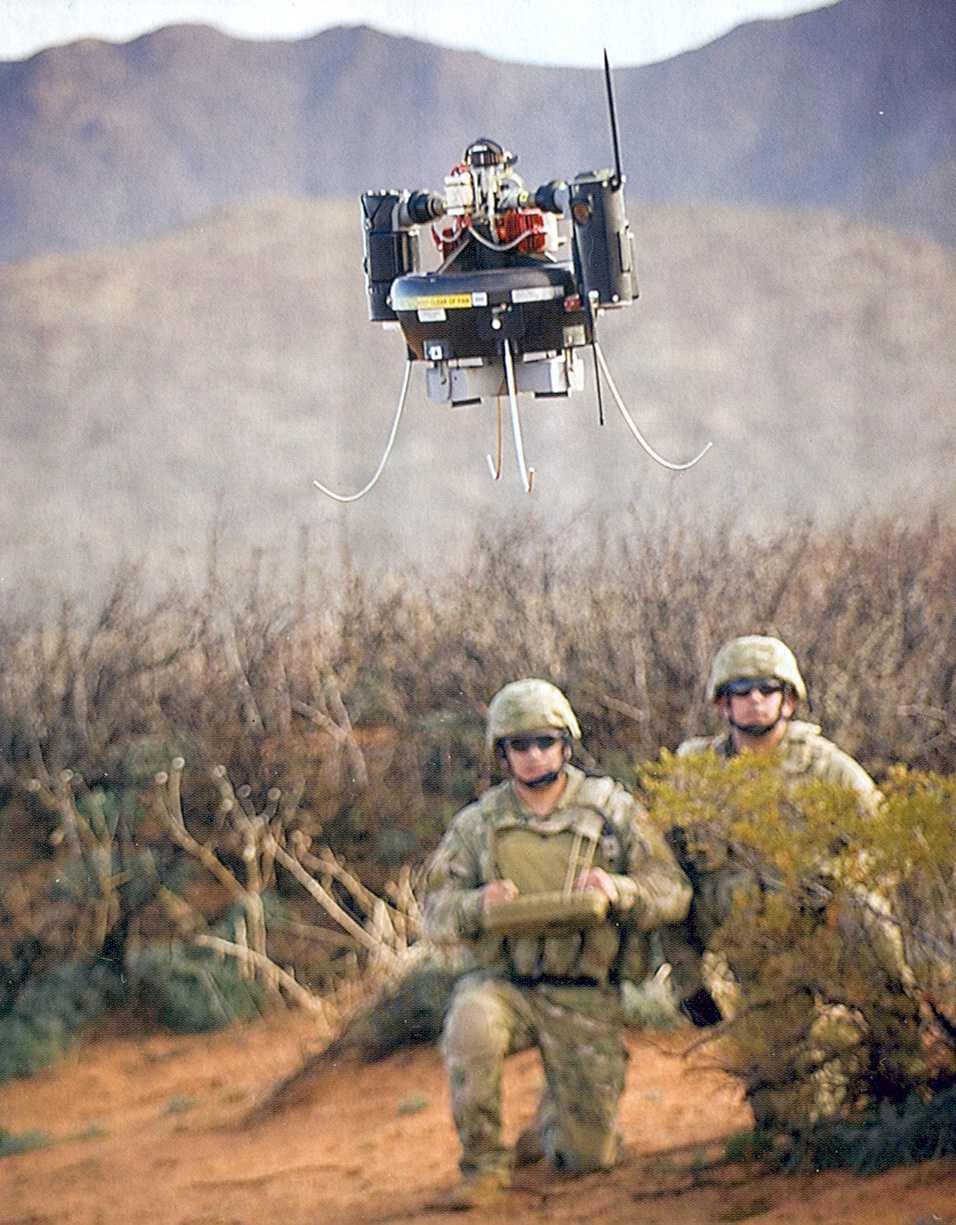
U.S. Army (Future Combat Systems) FCS Program Soldiers wear Multi-Cam ACUs though the BLACK sunglasses and weapons need to be at least a TAN color for camouflage...
 www.youtube.com/watch?v=JOCq0E3LwsQ
www.youtube.com/watch?v=JOCq0E3LwsQ
The U.S. Army Combat Uniform's (ACU) ACUPAT camouflage pattern doesn't work in dry desert regions and is contributing to our men being targeted by the enemy and being killed and maimed.
YOUTUBE user LineDoggie writes:
"ACU pattern sucks balls anyway. When the first Brigade (48th) wearing them showed up in Baghdad, we could spot them dismounted at Approx. 800M further away than those wearing DCU's."
Soldiers and units can and should fix this problem immediately by buying their own Multi-Cam camouflage pattern ACUs and the necessary velcro patches for their tours in Iraq/Afghanistan:
Multi-Cam Works:
www.multicampattern.com/IMAGES.htm
www.geocities.com/paratroop2000/surviveiraqgearlist.htm
or:
www.combatreform.org/surviveiraqgearlist.htm
PROFESSIONALS buy their own gear if needed to do their PROFESSION well; its time EVERY U.S. Army Soldier become and start acting like a PRO regardless of what the bureaucracy "seems" to want.
What are they going to do? Send you to Iraq?
Time to start acting like the U.S. Army belongs to the Soldiers in it and the American people; BECAUSE IT DOES---not the little ego club of 3-star generals who racketeer the Army's actions for their own personal benefit and the nation's national security ruin.
P.S.: we didn't mention the USMC in this description because its thoroughly permeated by malignant narcissism on top of being an immoral and incompetent bureaucracy--and should be abolished at once. Google "Growler", V-22", "EFV", "MRAP", Haditha" if you need some on-going reminders of USMC evil.
www.combatreform.org/marinesrefusetoarmor.htm
The U.S. Army FCS Program (bureaucracy) uses Multi-Cam--so the brass know it works and want to implement it, why wait?
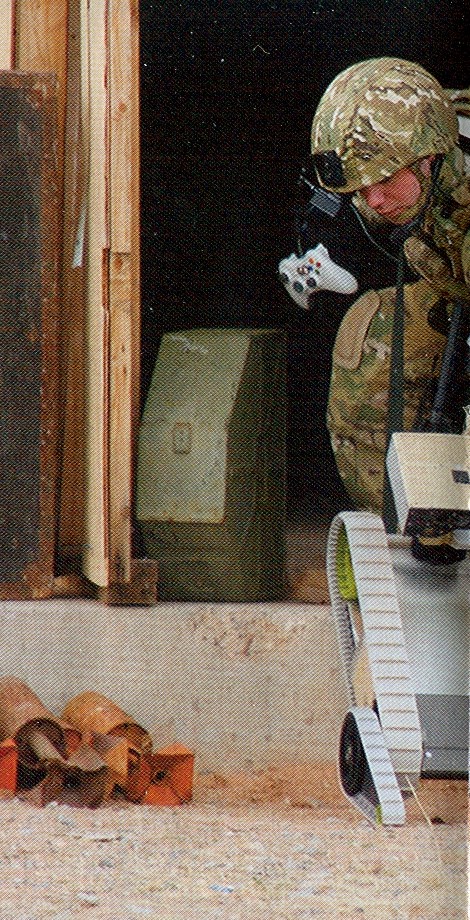
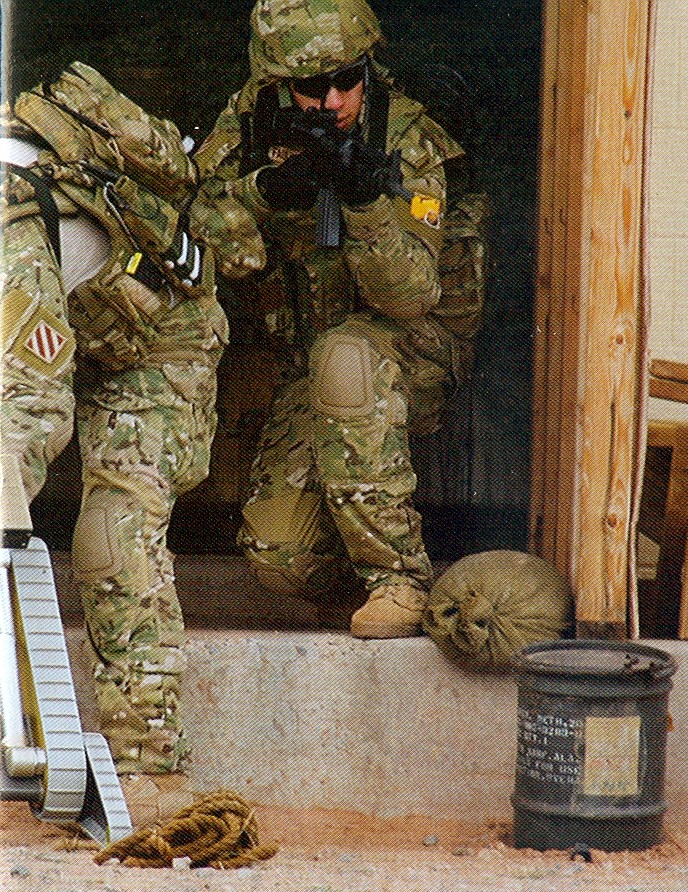
U.S. Army FCS program Soldiers wear Multi-Cam ACUs--however their BLACK NVG mounts and weapons need to be camouflaged!
The most basic camouflage is the sort worn by Soldiers on the battlefield. Conventional camouflage clothing has two basic elements that help conceal a person: color and pattern.
Camouflage material is colored with dull hues that match the predominant colors of the surrounding environment. In jungle warfare, camouflage is typically green and brown, to match the forest foliage and dirt. In the desert, military forces use a range of tan colors. Camouflage for snowy climates is colored with whites and grays. To complete the concealment, Soldiers paint their face with colors matching the camouflage material.
Camouflage material may have a single color, or it may have several similarly colored patches mixed together. The reason for using this sort of pattern is that it is visually disruptive. The meandering lines of the mottled camouflage pattern help hide the contour -- the outline -- of the body. When you look at a piece of mottled camouflage in a matching environment, your brain naturally "connects" the lines of the colored blotches with the lines of the trees, ground, leaves and shadows. This affects the way you perceive and recognize the person or object wearing that camouflage.
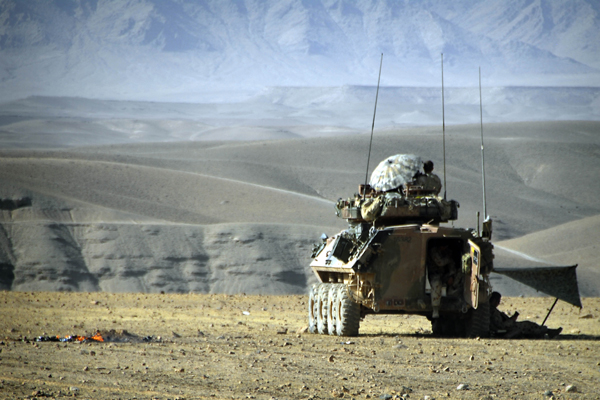
Human perception naturally categorizes things in the world as separate objects. When you look at a scene, you are gathering an immense amount of information with your eyes and other senses. In order for your conscious mind to make any sense out of this information, your brain has to break it down into component parts. When your brain perceives a long, vertical area of brown with green blotches connected to it, you perceive a tree. And when your brain perceives many, many individual trees in a given area, you perceive a forest.
One thing your brain is always looking for when analyzing visual information is continuity. Imagine a stack of 12 blocks. If all of the blocks are colored red, you perceive the pile as one unit. But if the bottom six blocks are red and the top six blocks are blue, you may perceive the pile as two separate units: a stack of blue blocks on top of a stack of red blocks. And if you were to randomly mix blue blocks and red blocks together, you wouldn't group them into colored units at all. We tend to recognize something as a separate object if it has one continuous color, so a person is much more likely to stand out when wearing a single color than when wearing a jumble of colors. In the jungle, you perceive the jumble of colors in camouflage material as many small things that are component parts of the surrounding foliage.
In this way, mottled camouflage helps people go undetected even though they are in plain sight. Once you have spotted a camouflaged person, he stands out, and it seems odd that you didn't see him before. This is because your brain is now processing the visual scene differently -- it is looking for a single person.
"Camouflage - The use of concealment and disguise to minimize the possibility of detection and/or identification of troops, materiel, equipment and installations. It includes taking advantage of the natural environment as well as the application of natural and artificial materials." That definition of camouflage by U.S. Dept of Defense neatly sums up a tactical ploy which dates back to the Napoleonic wars.
PRINCIPLES OF CAMOUFLAGE
There are seven basic principles of camouflage and concealment:
Shape
Shine
Shadow
Silhouette
Surface
Spacing
Movement
These are the things that catch an enemy's eye, and give away the presence of a man, vehicle, building or weapon. In the days of satellite imaging and other technical aids, these principles still apply - both at the personal level in the field, and when camouflaging entire buildings and artillery positions from the 'eye in the sky'.
Camou face and exposed skin paint
 www.youtube.com/watch?v=3WiMFEDCaaQ
www.youtube.com/watch?v=3WiMFEDCaaQ
CAMTECH offers the face paint they need with a SPF 15 sun block and they are "military kosher" with a National Stock Number (NSN) so units can order them through the supply "system". However, let's not be naive and expect the "system" to work and have these face paint compacts to actually ARRIVE any time in this metaphysical dimension--BUY THEM and send them to our troops. The "Desert Shield" model is the type we need.
CAMTECH Camouflage Technology
P.O. Box 1169 Newport Beach 2106
Australia
PH: +61 2 9918 7238
FX: +61 2 9918 4844
GSM: +61 4 0963 1789
www.camouflage.com.au
CAMTECH Manufactures a range of camouflage face paints for different terrains, including:
NSN 6850-66-130-0172 "AUSTCAM" (Leaf, Australian brown, Avocado). Popular in this region.
NSN 6850-99-942-7383 "British Tropical" (Leaf, British brown, Avocado). Popular in Europe.
NSN 6850-99-160-4210 "Desert Shield" (Beige, Australian brown, Avocado). Popular in the middle east.
NSN 6850-99-853-2949 "SNOCAM" (Leaf, White, Avocado ). Popular in Scandinavia.
NSN 6850-99-305-7050 "Czech specification" (Leaf, British brown, Black). Popular with Police.
NSN 6850-12-344-5764 "German Specification" (Black and Avocado). Not in production.
NSN 6850-99-891-6686 "British Low Irritant" (Leaf, British brown, Black). Same as Czech specification.
We are having a huge problem in Iraq/Afghanistan of casualties being created by our own failure to camouflage ourselves and our equipment. Stryker trucks are road-bound, road-kill certainly, but we don't have to make it even easier for the enemy to press the button to command detonate the land mine by being in OLIVE DRAB GREEN in TAN desert Iraq.
www.combatreform.org/strykerhorrors.htm
Its like we have lost our collective minds and forgotten every sound practice ever taught. Dismounted, Soldiers have their often white faces and hands exposed ruining whatever camouflage is on the body, head and weapon by shiny presence indicators that become aim points.
Perhaps we want to look less war-like? Look non-chalant?
Its way too late for that; we are already carrying loaded weapons and are foreigners so the locals are either already pissed off or supportive; if they want us to provide security they will understand war-like appearances. If they are rebelling against us, being stupid and uncamouflaged only makes them smile before they attack us. And it adds a level of disrespect and contempt that works against them ever coming to our side. Who wants to be allied to folks who don't even take their profession seriously?
Its time to practice what we teach and camouflage our faces and hands as professional Soldiers do before "leaving the wire" of the Forward Operating Base (FOB).
Personal camouflage is best conducted by Soldiers in pairs, as battle partners. Start by painting camouflage cream on your face, neck, ears and hands. A common mistake is to cover the face but leave ears, neck and hands unpainted.
There are two schools of thought on personal camouflage.
The British adopt patterns that leave some skin unpainted, while the U.S. armed forces prefer to paint the face completely in two-color creams.
Ideally the patterns should be painted obliquely across the face, starting at the forehead and temples, and running down to the opposite side of the face. This breaks up the vertical and horizontal lines formed by the eyes, nose and mouth. The effect is further enhanced by painting lighter colors in areas of shadow like the underside of the chin, and darker on cheekbones, forehead and nose.
Camouflage paints vary according to the theatre in which you are operating - tan and light green in the desert; light green, dark green and brown in temperate environments; and white and dark green or brown in the arctic. The creams may also contain sun screen or insect repellant (or both) to help protect the Soldier from environmental hazards.
There is a new camouflage face paint cream made in Greece that hides the heat being given off the body.
HELMET CAMOUFLAGE
 www.youtube.com/watch?v=xi3pc0aA-oc
www.youtube.com/watch?v=xi3pc0aA-oc
The next area for attention is the helmet. Modern helmet covers are made from camouflaged cloth and include elastic loops to take vegetation. When "camming up" a helmet or jungle hat, remember that although a small bush may effectively break up its shape, it will also look pretty obvious in the wrong environment. An over-camouflaged helmet can look just as obvious as a bare one.
Vegetation must be attached securely so it does not fall off when you run for cover, and should be in the local materials. For example, use dried grass in a field of hay, or evergreen in a coniferous wood and not vice-versa - which would attract a burst of fire or a single accurate shot from the enemy.
Vegetation can also be attached to webbing to break up the straight lines of the pouches. Some Soldiers sew elastic loops to the pouches to assist in the camouflaging process. The squares of reversible brown and green nylon scrim from vehicle camouflage nets are a quick and useful way of breaking up the outline of webbing. However, care should be taken that scrim or netting does not snag on fences or vegetation and slow or stop your progress across country It should also be configured so that you have easy access to ammunition pouches, first aid kit, respirator and water bottle.
You fight as you train, which is why every Soldier should take the time to cut enough burlap straps to completely cover his LBE, helmet and weapon. These can be obtained from old sacks of potatoes and cut with fabric scissors. Another option is to cut up old BDUs, though its green color isn't as universal as the tan of burlap. You simply tie them with an overhand knot to every metal point on your LBE- belt clips, canteen cap, loops, etc. Cut 100 mph OD green tape to make small "dots" to cover metal snaps.
Details for detachable PASGT/ACH/MICH LT Richard Todd Ragtop Helmet camouflage Kit:
The goal is to break up the outline and render visual camouflage. Brigade Quartermaster (1025 Cobb International Blvd., Kennesaw, GA or U.S. Cavalry Store has "ghillie" camouflage covers for the PASGT Kevlar(c) helmet if you don't want to take the time to "do-it-yourself". Its important that you retain the helmet camou band to have a tie-down place. This can be done taking 2 X 9 inch lengths of gutted 550 parachute cord, girth-hitch knotting the loops on the right/left side of the camouflage band and running the cords into the helmet cover slot and tying to a helmet suspension point. Ranger Joe's International [325 Farr Road, Columbus, Ga 31907 1-800 247-4541 FAX: (706) 682-8840] has a specially made set of "turtle straps" that can secure the helmet camou band that can be obtained, depicted below.
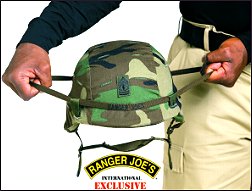

Going to Multi-Cam is just a beginning. Even better is "thellie" camouflage suits that make a Soldier invisible from enemy Forward-Looking InfaRed (FLIR) detection. Every Soldier should have a "space" blanket for covering his fighting position from enemy FLIR detection.
 www.youtube.com/watch?v=kJnKikgo2u4
www.youtube.com/watch?v=kJnKikgo2u4
When not being worn, the burlap/BDU cloth strips can be placed in a plastic bag or an unused ammo pouch for field use; there should be no safety restrictions for parachute jumping "ghilled up" since 82nd Airborne Division scouts do so routinely. If not these strips could be applied soon after assembling from the drop zone, saving time trying to forage for and cut natural vegetation which will dry up and need replacement soon.
 www.youtube.com/watch?v=jUe9haoxMFk
www.youtube.com/watch?v=jUe9haoxMFk
GOGGLE CAMOUFLAGE
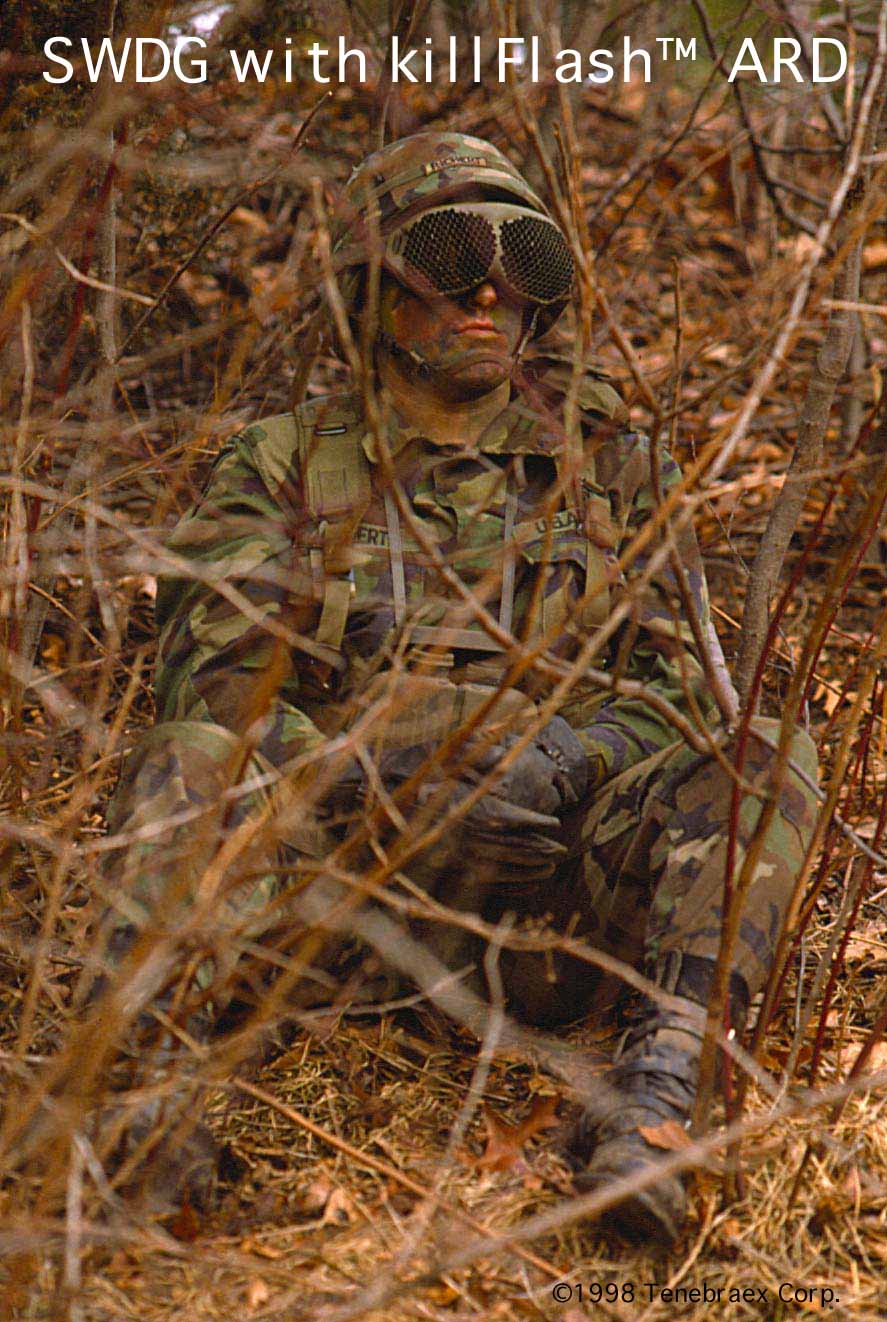
You do not want to ruin your helmet camouflage by strapping on a shiny Sun, Wind, Dust Goggle (SWDG). At NTC we as OPFOR could target and kill BlueFor from miles away because of the glint reflection from SWDGs on the helmets of their TCs and Drivers. While the ultimate solution would be a Tenebraex-type glint shield until this is available, a Cover home-made or store-bought will suffice as some of our men have realized in Afghanistan where long-range target acquisition and avoiding it from the enemy is vital.
What's absurd and ridiculous is that our Soldiers in COMBAT against the enemy are having to use socks and cut t-shorts to cover their SWDGs when not in use because the Army "system" will not supply them a cover unless its "perfect" and has been tested to a ridiculous degree. They have never heard the adage and wisdom; "Perfect is the enemy of good enough". So our troops are cutting t-shirts. Others that don't are getting shot at and wounded and killed.
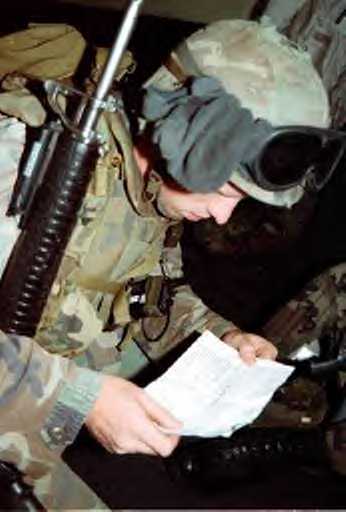
There is available right NOW, "Off-the-shelf" two SWDG covers that will do the job made by Eagle Industries and offered by Brigade Quartermasters that should be bought by the thousands and issued IMMEDIATELY to every Soldier in Afghanistan and who could fight in the desert for "Desert Storm II".
Eagle Industries SWDG Cover UNLINED (Do not buy lined version! Doesn't wrap well around SWDGs!)
Pics:
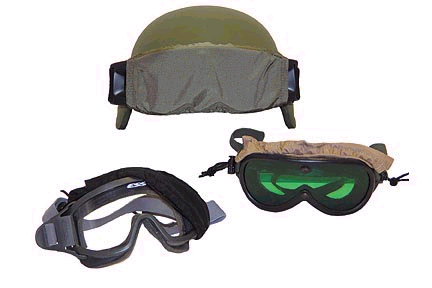
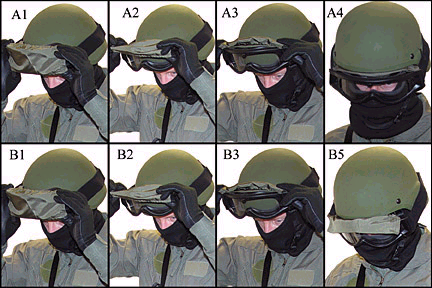
Retail Price: $10.95
Quantity:
Color: Black, Olive Drab, Tan
Protect one of your most valuable pieces of equipment with Eagle's new goggle cover (patent pending). Our goggle cover will keep your lens scratch free and eliminate unwanted shine and reflection. Eagle's unique design and quality gives our goggle cover the versatility to fit a wide variety of sizes. The following features make our goggle cover a must have.
-Constructed with 420 denier water and abrasion resistant pack cloth.
-Cinch down bungee cord with barrel locks allows for an adjustable snug fit.
-Elastic sides allow for direct attachment to goggle adjustment strap.
OR:
Brigade Quartermasters
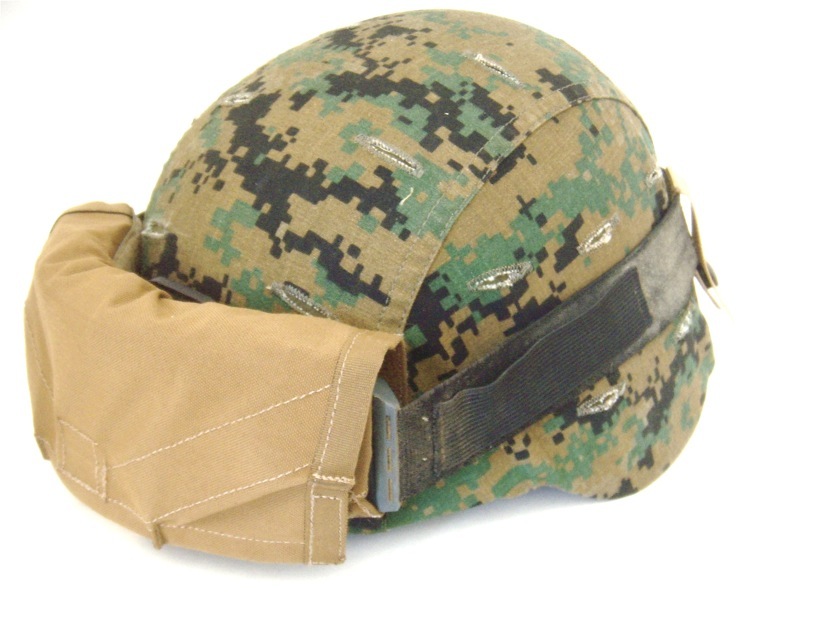
www.actiongear.com/cgi-bin/tame.exe/agcatalog/level4c.tam?M5COPY.ctx=26234&M5.ctx=26234
GOGGLE SOCK(tm) LENS PROTECTOR AND ANTI-GLARE COVER, REVERSIBLE
Developed by a U.S. marine to extend the life of his protective goggle lens and eliminate glare when they're not in use. Simple but effective Goggle Sock(tm) fits easily over virtually all goggle styles in minutes and can be deployed or stowed in seconds! Reversible style matches helmet cover so you'll be ready no matter what part of the world you're in. Elastic at each end ensures foolproof fit.
Choose from Woodland/Desert 3-Color and Woodland/Black reversible versions. Made in USA.
Shipping Weight: 0.31 lb / 0.14 kg
Description - Item No. Our Price Stock Qty
GOGGLE GUARD SOCK REV W/L-DES3 - GGS0246 $11.99
GOGGLE GUARD SOCK REV W/L-BLK - GGS0251 $11.99
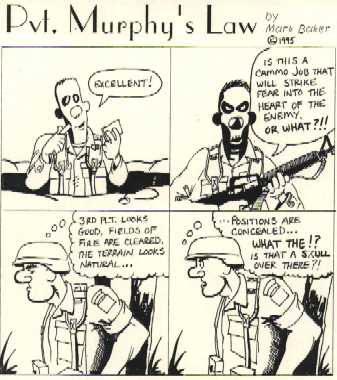
BODY CAMOUFLAGE
 www.youtube.com/watch?v=3wicYZB3QIg
www.youtube.com/watch?v=3wicYZB3QIg
 www.youtube.com/watch?v=qyc1Os0rpeI
www.youtube.com/watch?v=qyc1Os0rpeI
If the enemy is approaching and you want to remain undetected, THROW OVER A PONCHO OR ECOTAT TMP OR LWSB-MP! The use of a covering is not a TTP reserved just for the bad guys! Infared and visual detection defeating camou nets are available.
There is a new combat field uniform call the Battle Dress System (BDS) under development by Natick Labs which is supposed to have an adaptive camouflage. BDS is being produced in a single color that has been shown to blend in most environments, including urban environments. A set of spray-on marking inks should be produced so that the Special operator/Paratrooper could apply a camouflage pattern to his BDS to better blend in with the local terrain.
This is not without precedent; snipers use hunter's camouflage paint today to gain a "tactical camouflage edge, " though once used, your BDS are no longer presentable in garrison. Four colors would be produced: white for arctic, tan for desert, and black and brown for temperate climes.
Of course these colors could be combined to provide the best camouflage. The inks would come in spray cans for ease to use and to allow the SOF operator/Paratrooper to fade one color into another. The inks would be IR suppressant and would not produce their own unique signature, be iit visual or olfactory and would not degrade the effectiveness of BDS. The operator could apply the camouflage inks to the BDS uniform, load-bearing equipment, weapons, team equipment, etc.
A compound to remove the camouflage would also be developed to remove the camouflage so a new pattern could be applied for operations in a new area. Also under development is a reversible BDU which can have two patterns of camouflage for rapid adaptation to the terrain. Valuable time was wasted in both Gulf Wars outfitting Soldiers in desert camouflage uniforms (DCUs). In other cases lives were lost wearing woodland green camouflage BDUs making Soldiers easy aimpoints. Reversible BDUs will solve this.
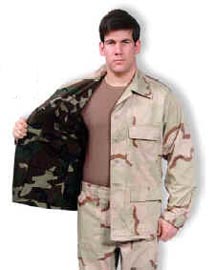
www.natick.army.mil/soldier/media/fact/individual/Reversible_BDU.htm
Reversible Battle Dress Uniform (BDU)
Overview:
Research and development efforts in the area of textile printing now allow successful printing on both sides of the fabric without colors bleeding through.
Two fabrics have been successfully produced: 50/50 Nylon/Cotton twill for temperate environments and 50/50 Nylon/Cotton ripstop poplin for hot weather environments. Possible combinations of front & back print include Woodland/Desert, Woodland/Urban, Desert/Urban, and any print with Arctic Snow Camouflage.
Benefits of reversible BDUs include:
Decreased deployment time
Flexibility in adapting to changes in mission scenario, e.g. airdrop into a desert environment and subsequent maneuvers in a mountainous/woodland terrain
Provide equivalent comfort to standard BDUs
Reduced burden on logistics system, and reduced logistics costs
Reduction in number of items issued to Soldier
Status:
Design modifications include pass-through pockets, double pocket flaps, hinged front fly, double buttons on coat and trousers, and reversible labels. Prototype coat and trousers weigh a total of 5.5 ounces (5% more than current BDUs). Alternate construction methods are being explored to reduce weight. Other items for potential reversibility are helmet and pack covers. Reversible BDU test items are being produced for testing with the U.S. marine corps.
-----------------------------------------------------------------------
Last Update: 1 April 2003
Adoption of such a system will help to reduce the visual signature of the Special Operator/Paratrooper on a battlefield where we no longer are the sole possessors of night vision devices. We must take steps to ensure we actually can "own the night" with undetected maneuver.
WEAPONS CAMOUFLAGE
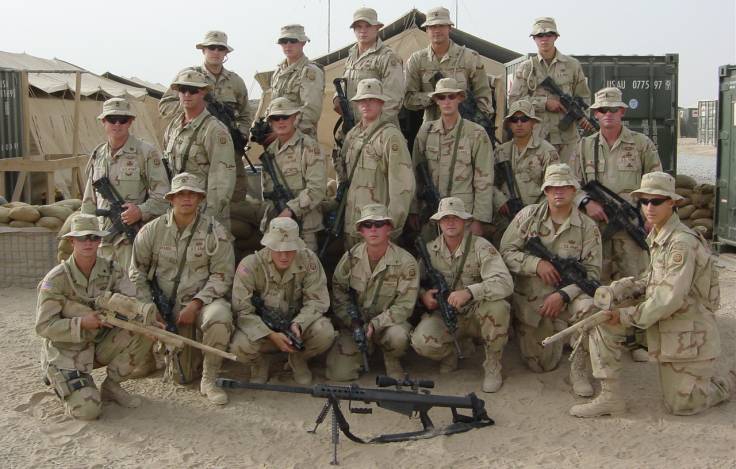

The rifle is an obvious straight line, and camouflaging it requires some thought. Taping scrim or hessian to the barrel could result in your hand slipping at the critical moment when you engage a target. Scrim can also snag on the working parts. One solution, which was favoured by the Rhodesians, was to paint the plastic furniture of their FNs. M4 carbines and other weapons have been painted or come parkerized in colors like tan and are being used in Afghanistan by U.S. forces. Compare the black weapons with the tan ones in the photo above of an 82nd Airborne scout platoon now in Afghanistan.
Camouflaging the Stoner M16A2 Assault Rifle
 www.youtube.com/watch?v=kCV29wVpNv0
www.youtube.com/watch?v=kCV29wVpNv0
Camouflaging M16/M4 5.56mm NATO STANAG 4179 30-Round Magazines
 www.youtube.com/watch?v=ZGgNJq-vTCM
www.youtube.com/watch?v=ZGgNJq-vTCM
 www.youtube.com/v/hcNzuWIJaX0
www.youtube.com/v/hcNzuWIJaX0
You won't be popular at the "10-20" standard-obsessed armory if you hand back a camo-painted M16, however. Perhaps the best solution is camouflage adhesive tape. A couple of strips is enough to break up the line of the barrel. McNett offers camouflage tape that stretches and doesn't uses adhesive to stick that can be applied to your weapons without getting in the way of their function.
 www.youtube.com/watch?v=J2yAhhU_8KA
www.youtube.com/watch?v=J2yAhhU_8KA
U.S. infantry weapons are in an absurd BLACK finish making them "shoot me sticks" that help the enemy see and hit our Soldiers, killing and maiming them. The testimony of Vietnam [combatreform.org/guerrillabn.htm] and Rhodesian Light Infantry Combat veterans [combatreform.org/RLIfireforce.htm] are presented in this video; further "validating" our points. Did you get that "memo" military bureaucrat?
This problem can be solved by spray painting magazines and McNett Camou-Form tape covering non-metallic parts.
YOU HAVE NO EXCUSE.
Get off your ass and do it--or don't even pretend you are a professional.
For Optics and Night Vision Device camouflage, go to this AES web page:
Night Vision: making sense of it all?
FIELD CRAFT
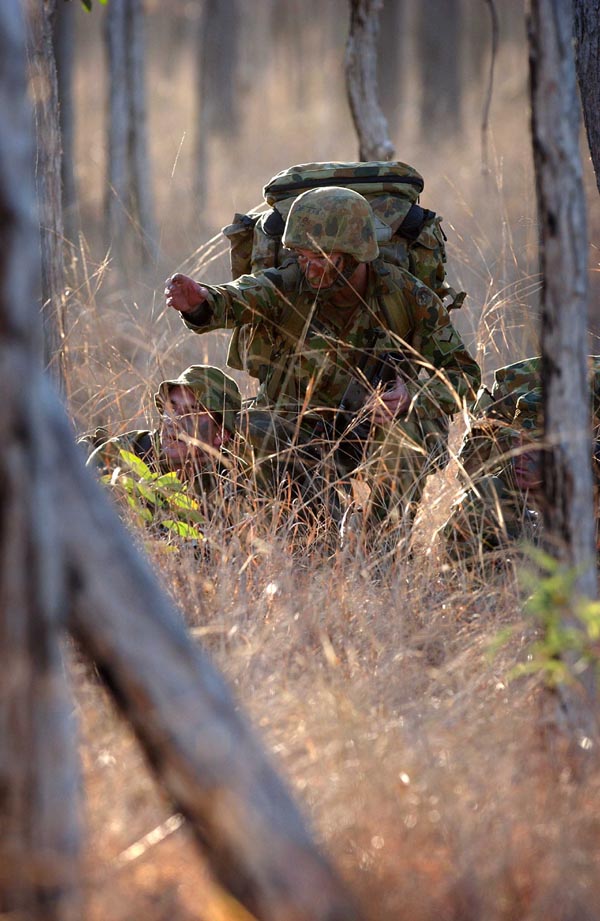
Camouflage is more than just putting on a BDU and painting your face green. It involves being wary and careful in every move you make - because one careless movement by you or your comrades could be the last you make.
After a few days in the fresh air, most people's sense of smell improves and becomes a valuable extra sense. Although you must keep clean in the field to avoid sores and infection, the use of heavily scented soaps (or worse still, aftershaves) should be avoided since they can attract attention over considerable distances.
Cigarette smoke as well as cooking smells can be detected. Both cooking and smoking also generate refuse which poorly trained men may leave behind, to give a skilled enemy clues about their strength, morale and nationality.
Soldiers should carry their refuse out of a training area, or on operations. Burying it is not reliable since the smell of food scraps can attract animals that will dig up cans and wrappers. The best solution is to carry a dark colored plastic bag, into which you can put refuse, and which you can store in an outside pouch on your rucksack. Remember though that a bag inside your rucksack can split or spill. If it contains human waste as well as wrappers and tins, the effect can be somewhat unpleasant!
Since World War I, opposing forces have used aircraft to seek each other out from the air. In order to hide equipment and fortifications from these "eyes in the sky," ground forces have to use camouflage on a larger scale.
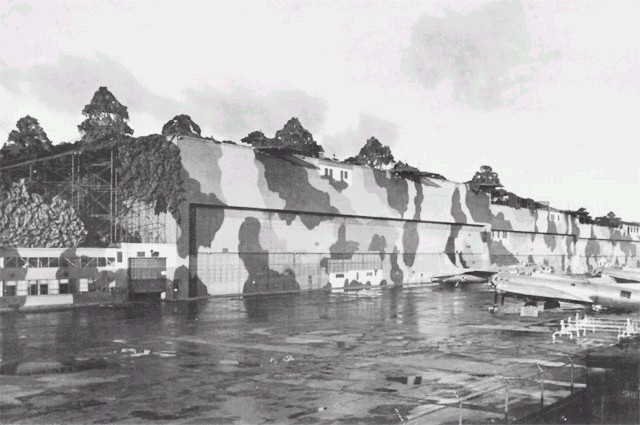
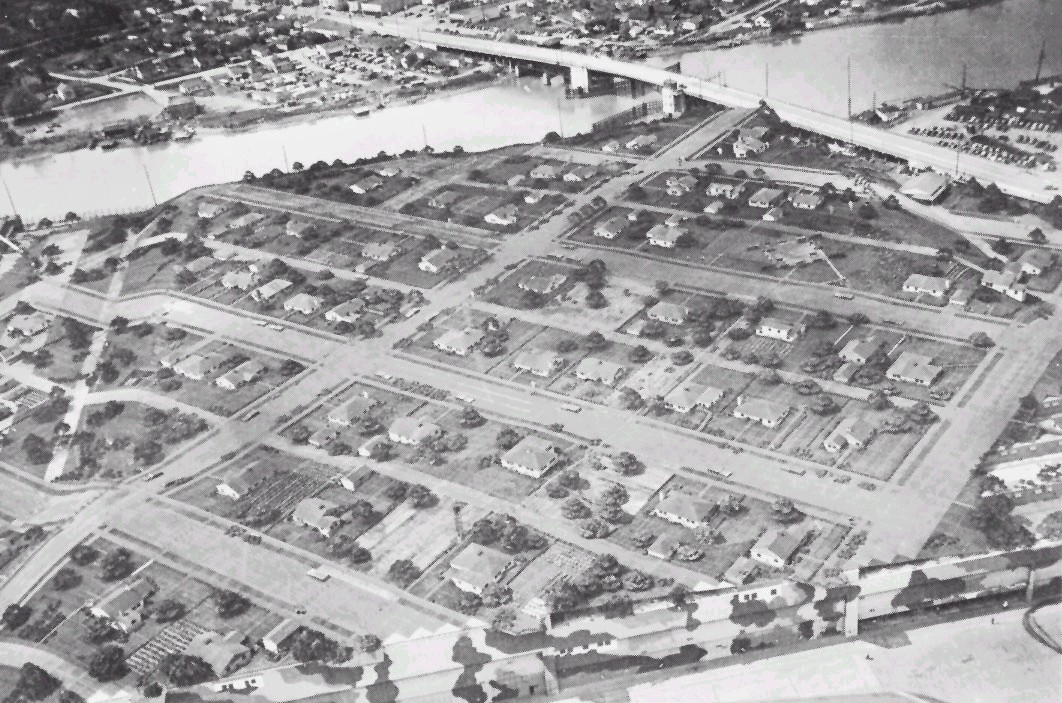
Even entire manufacturing plants and cities should be camouflaged or better yet go UNDERGROUND...
Lockheed
BEFORE
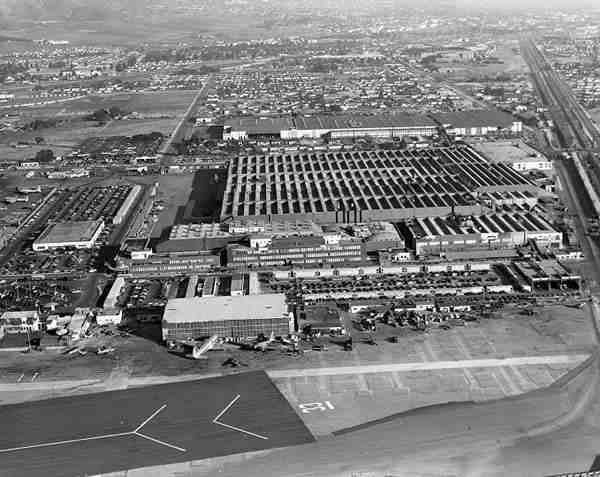
AFTER
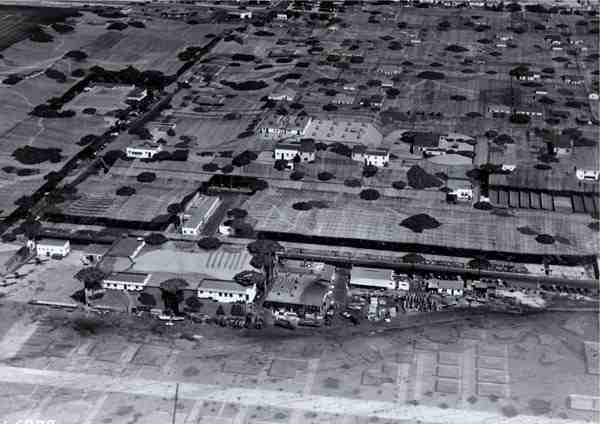
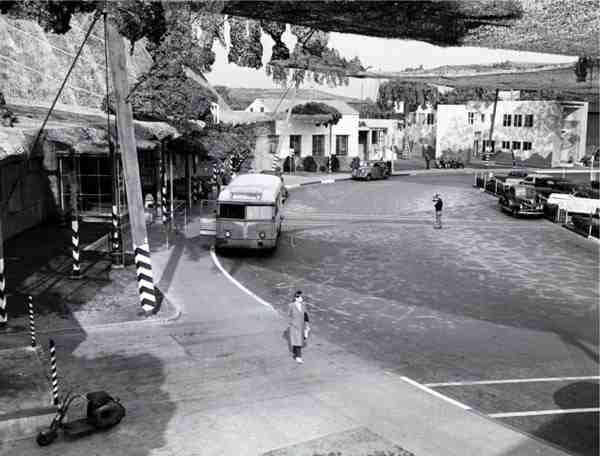
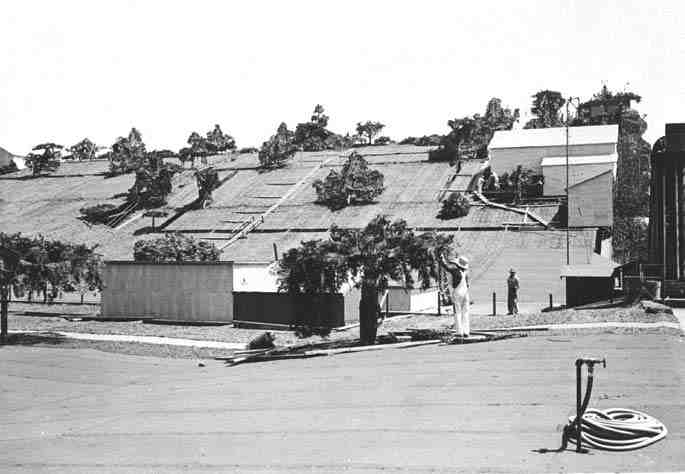
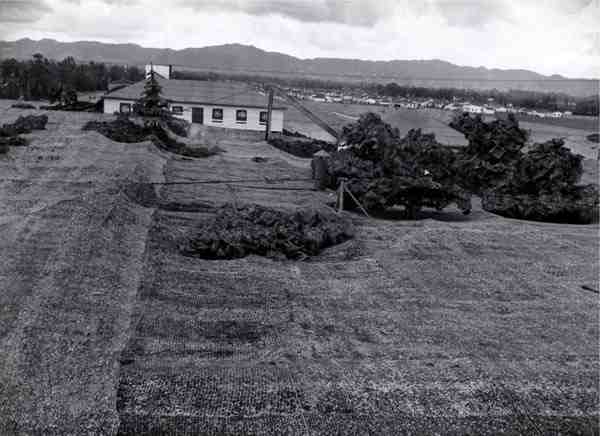
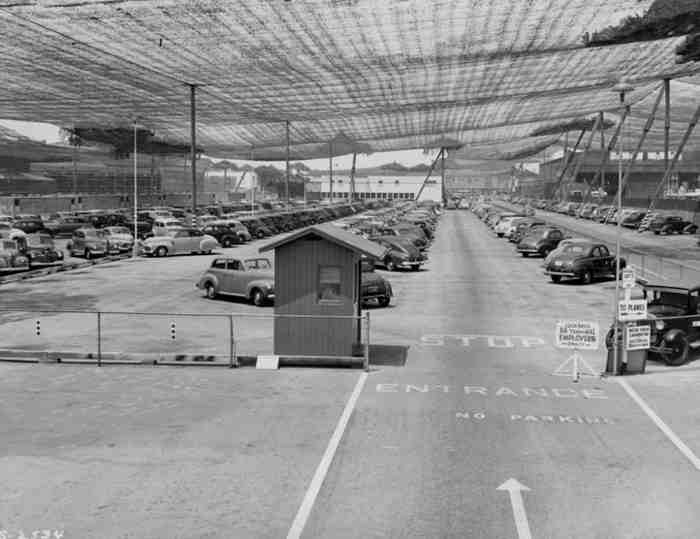
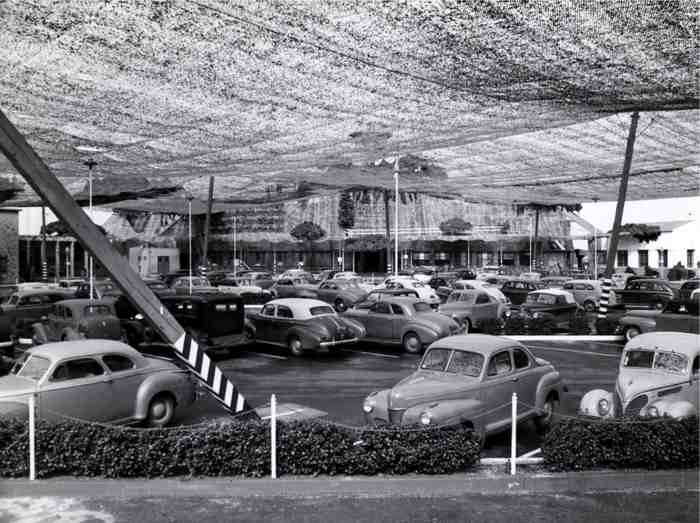
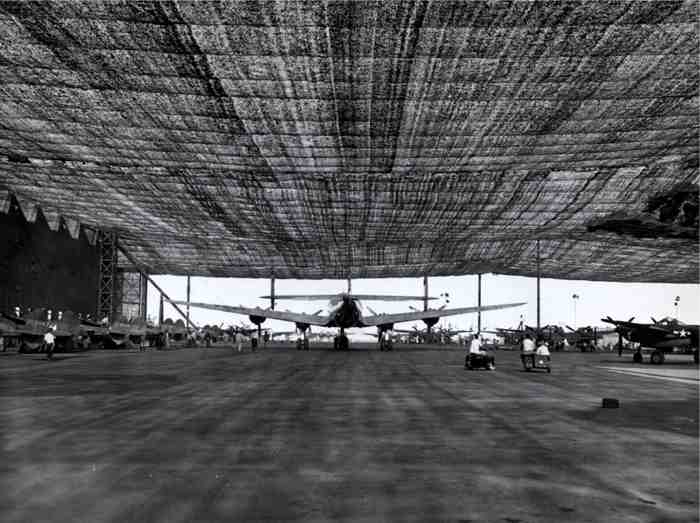
Since World War II, almost all U.S. military equipment has been colored in dull green ("if it doesn't move, paint it!") and brown colors so it blends in with natural foliage. Additionally, Soldiers almost always carry camouflaged netting which they can throw over military vehicles to conceal them better. Soldiers are also trained to improvise camouflage by gathering natural foliage from an area and covering tanks and other vehicles. Using these means, Allied and Axis forces in World War II camouflaged tanks, jeeps, planes, guns, manufacturing plants and entire army bases.
Deception
Deception was employed to great effect by Serb forces in Kosovo during NATO's Operation Allied Force. The DIA call it "C3D2" or Camouflage, Cover, Concealment, Deception and Deceit. Such measures were decisive in WWII North Africa when the British hired a famous magician to hid Alexandria harbor from Nazi bombers and the famous deception campaign that created a "phantom army" led by General Patton before D-Day. It can be practiced by units as small as a company or platoon, or as part of a major program to protect an industrial site or air base. In its simplest form, deception includes digging shallow false trenches, or taking an empty ammunition box, laying it on its side and piling earth around it so its enclosed shadow looks like the embrasure of a bunker.
Fake craters can be made by piling soil in a circle, to give the impression from the air that greater damage has been done, for instance to an air strip. On a bigger scale, fake buildings and plant can be constructed from timber, plywood and corrugated iron, and positioned near the real target, which is then camouflage to hide it from view. The dummies should also be camouflaged too add realism - but not too well!
Militaries also make extensive use of decoys as a means of camouflage. Unlike traditional camouflage, the purpose of decoys is not to conceal forces and equipment, but to divert the enemy from their locations. In the Battle of Britain, Allied forces set up more than 500 false cities, bases, airfields and shipyards, consisting of flimsy structures that resembled actual buildings and military equipment. These remarkable dummies, built in remote, uninhabited areas, significantly diminished the damage to actual cities and fortifications by causing the Axis forces to waste their time and resources.
This sort of camouflage is still used today, to good effect. Many modern equipment decoys have advanced pneumatic systems, which give them the movement you would expect to see in real equipment. Traditional camouflage is also used today, but it is not always effective.
Decoy technology has also advanced in response to modern detection systems. The U.S. Army and other military forces have developed easily-transported, inflatable dummies that not only resemble tanks and other equipment visually, but also replicate the thermal or radar signature of that equipment. To radar and other long-range scanners, these dummies are virtually indistinguishable from real equipment. A less precise decoy strategy is to flood an area with all sorts of objects that show up on radar, thermal-imaging and listening devices, making it harder for the enemy to focus in on any particular piece of equipment.
As detection and spy equipment continues to advance, military engineers will have to come up with more sophisticated camouflage technologies. One interesting idea that is already in the works is "smart camouflage" -- outer coverings that alter themselves based on computer analysis of changing surroundings. No matter how advanced camouflage gets, the basic strategy will still be the approach used by the first human hunters: Figure out how your enemy sees you, and then mask all of the elements that make you stand out.
Fires attract aircraft and so if during an attack black smoke is seen rising from a group of dummy vehicles, there is a fair chance they will be bombed. Dummy tanks and aircraft can be used to replace the real thing after they have departed, so concealing vehicle and aircraft movement.
During Allied Force, Serb forces calculated they had 12 hours to move tanks and artillery, and replace them with dummies, before air attacks began. They also used piles of burning tires to create the illusion of brewed-up vehicles, and even plastic sheeting to simulate roads.
Deception may also include the broadcasting of false radio traffic. This was done by the British in the Gulf War in 1991 to conceal the fact that they had moved from the marines on the right flank of the Coalition Forces, to the U.S. Army in the center.
Low-Observability and Stealth incorporated into weapons/vehicles
 www.youtube.com/watch?v=c5Y1o2GYB1s
www.youtube.com/watch?v=c5Y1o2GYB1s
The intention of stealth is to permit friendly weapons, aircraft, ships, submarines and land vehicles to approach closely enough to attack, surveil or jam enemy communications and surveillance without themselves being detected. Normally, enemy detection of friendly weapons should not occur or at least not be confirmed until too late to prevent the mission. In the public mind, stealth concepts centre around minimization of radar signature but such a single-spectrum approach would likely fail in the modern battlespace. Thus signature reduction must be balanced across all the threat spectrum.
As the technology of camouflage has advanced over the past hundred years, so has the technology of seeing through camouflage. These days, military forces can use thermal imaging to "see" the heat emitted by a person or piece of equipment. Additionally, they may use radar, image enhancement, satellite photography and sophisticated listening devices to detect the enemy.
To hide from this scanning technology, military forces have to think past visual concealment. In modern warfare, camouflage for equipment and Soldiers may be made of material that keeps excess heat from escaping, so their thermal "signature" does not show in thermal imaging. In ships, the major heat source is the engine exhaust. To reduce this thermal emission, some modern ships cool the exhaust by passing it through sea water before it is expelled. Some tanks have a similar cooling system to mask the heat of their exhaust.
To counteract image enhancement -- the amplification of tiny amounts of light (including low-frequency infrared light) -- some armies are developing sophisticated smoke screens. A heavy cloud of smoke blocks the path of light, imparting a sort of invisibility to whatever is behind the smoke screen. According to one report, the United States is working on a smoke screen that would be impenetrable to night vision technologies while still allowing advanced U.S. thermal imagers to function correctly. On a larger scale, the British shipbuilder Vosper Thorneycroft has developed a system that uses a series of water nozzles to produce a constant fog all around a ship, obscuring it from view.
Stealth technology allows militaries to hide equipment from radar/infared by design. In stealth equipment, the surface of a vehicle is made up of many flat planes, interconnected at odd angles. These planes serve to deflect the radar radio waves so they don't bounce straight back to the radar station, but instead bounce off at an angle and travel in another direction. Equipment may also be coated with a layer of "radar-absorbent" material. When a radio wave hits an object, the electrons in that object are excited to some degree, so the wave has passed on some of its energy. In a good conductor, such as a metal radio antenna, the electrons move very easily, so the radio wave doesn't lose much energy in getting those electrons excited. Radar-absorbent material, on the other hand, is a very poor conductor, so there is greater resistance to moving the electrons. Because of this resistance, the radio wave loses more energy, which is emitted as heat. This reduces the overall reflected radio signal.
The familiar stealth bomber image clearly demonstrates the essentially flat, angular panels which constitute the main implementation of stealth design in this aircraft. Flat panels positioned at right angles to an enemy radar reflect strongly and would represent a very high radar cross section (RCS: geometry and reflectivity contributions both high). However, when such a flat panel is tilted away from the radar direction, the high reflectivity becomes a virtue as the majority of the radar signal is reflected away from detection.
At about 30 degrees tilt, only about 1/1000th (ie. -30dB) of the radar power is detected along the line-of-sight. If the panel is tilted away in two axes, then the angle of tilt in each plane need only be about 8 degrees to achieve the same -30dB signature reduction. Naturally, when building a stealth aircraft or ship (eg. Visby corvette above), aerodynamic, hydrodynamic and material limitations influence the final geometry achievable. In addition, radar absorbing materials (RAM) are still needed to reduce the inevitable radar reflections from edges, such as wing leading edges, trailing edges, ship deck edges, bilges, mast/radar/bridge housings, etc.
Note also, the stealth bomber includes thermal signature reduction principles in its design. For example, the leading edges of the wings, heated by air friction in flight, are internally cooled by pumping fuel around them. The engines intakes and exhausts are mounted above the wings, out of sight of heat-seeking ground-to-air missiles (SAM's, MANPADS, etc). In previous designs, lights were incorporated into the lower surfaces to attempt to blend the visual silhouette into the sky background. Controlling the output was intended to reduce closest approach distances from about 13 nmi daylight to 2 nmi daylight, with similar improvements in dusk and night observing conditions. This is an extension of the long-known counter-shading principle and is used on the F-22 for example.
The Visby corvette discharges its warm air (and water) beneath the vessel rather than permit a hot funnel and plume to give away its position to a thermal-imager-equipped enemy. The HMMWV image below, shows a thermal-imager equipped vehicle intended for surveillance operations on land. However, the vehicle itself, though small and close to the ground, and much quieter than a main battle tank for example, still has a significant thermal signature, mainly from the hot wheels, tires and engine area. Even the electro-thermal cooling effect of the thermal camera is clearly visible in the image (small black area front of windscreen). This is obvious proof that infared camouflage and hybrid-electric drives for vehicles are urgent priorities.
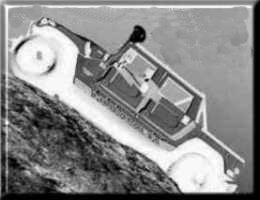
SOLUTION TODAY:
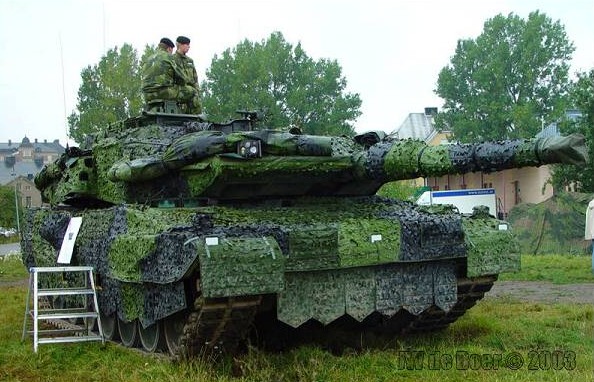
PAST PRECEDENT:
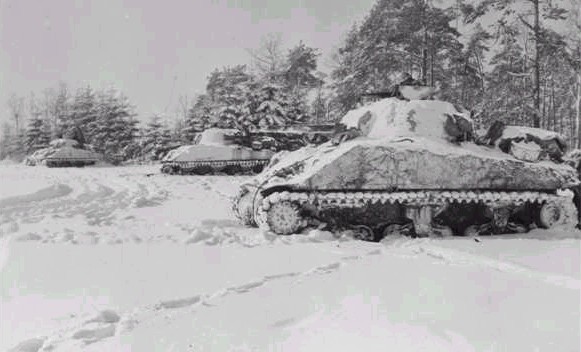
New paints are available now to camouflage both humans and tracked vehicles from infared detection. The WW2 "Greatest Generation" learned the hard way to camouflage themselves (see M4 Sherman medium tanks in snow camo above); a lesson the current, lazy slacker generation refuses to heed resulting in needless casualties.
www.defensereview.com/modules.php?name=News&file=article&sid=725
Anti-Thermal/IR Camo Tech for Infantry and Special Operations Forces Posted on Friday, April 22 @ 04:49:41 PDT by davidc
by David Crane
david@defensereview.comRemember what Arnold Shwarzenegger's character, Major Dutch Schaeffer, accidentally stumbled onto towards the end of "Predator" (1987), that allowed him to defeat the alien hunter's high-tech thermal/IR (infrared) vision--you know, right after Dutch's entire team had been systematically butchered by said alien? If not, I'll tell ya'. It was mud. Simple grey Amozonian mud. The mud hid Dutch's thermal/infrared (IR) signature (i.e. heat signature) from the alien hunter's thermal/IR vision, so the alien couldn't see/locate him against the jungle foliage. That development changed the course of the movie, creating a juxtaposition of predator and prey. Dutch now became the predator, and and the alien hunter became the prey. All because of some mud.
17 years later, Intermat Defence Coatings, a division of Intermat Group SA (Athens-Hellas, Greece), has introduced a high-tech version of Dutch's no-tech mud tactic. Designed and developed for the Greek Special Forces (SF)/Special Operations Forces (SOF), it's a...
highly cost-effective/relatively inexpensive wide-spectrum (400-20.000 nm) "modulated performance", "special camouflage" anti-thermal/IR (or, anti-IR/thermal) skin and face cream (a.k.a. wide-spectrum electronic camouflage cream) that effectively camouflages exposed skin on the wearer against all current infrared sensors and thermal viewers on the 21st century battlefield. Adhering to the philosophy "if you can't see it, you cant shoot it", this "low-cost force-multiplier" (as the company describes it) is not only effective, but also NATO STANAG 4319 compliant. Intermat had previously developed an anti-thermal/IR helmet paint, jackets, and vehicle coating/paint (mobile targets' camouflage), that accomplishes the same task (giving the wearer a much lower signature/reduced thermal trace).
Because DefenseReview was intrigued by the technology, we contacted Intermat in Greece and ended up speaking briefly with Bill Filis (Assistant Director) and Kosmas Prassas (Managing Director). Both men were enthusiastic in talking about the technology, and spoke in limited fashion about Greek armed forces' experience with the anti-IR/thermal cream. Since the current product is metallic in appearance in all its available colors, and thus reflective in natural or artificial light, Defense Review was curious to know if Intermat has a matte/non-reflective camouflage paint version available in O.D. green, black, desert tan, and Coyote brown that can serve double-duty as standard camouflage paint. When we asked Mr. Prassas about this, his response was something to the effect of "not yet". He then clarified that since the cream is primarily intended to be used during night operation to defeat IR sensors and thermal viewers, a standard/normal light camouflage version wasn't a priority at this time. My question now would be what if you're engaging in jungle warfare, and the enemy starts employing IR and thermal devices during the day? Wouldn't you then need a coating/paint that camouflages the wearer in all light spectrums? Unfortunately, I didn't think to ask this question during the interview. DefRev is curious as to the Intermat skin & face cream's utility in desert warfare environments, where the ambient temperature is often likely to be higher than the human body's, during the day.
We also didn't think to ask Mr. Filis or Mr. Prassas about the potential for the wearer to overheat, since the cream, in order to be effective, can't allow the covered area to dissipate heat normally. Although, since the user would most likely only cover his face and, perhaps, his hands with the cream, he could still dissipate heat normally over the rest of his body, so that's probably not really a concern. However, the next time we talk to the folks at Intermat, we'll ask them about this aspect. DefRev would like to thank Engadget.com member "Steve" for bringing this point up in the "Reader Comments" area of Engadget.com's blurb on the Intermat anti-thermal/IR cream, titled "Overclock your commando: anti-thermal grease". It's an interesting point, and worth asking about. We'll have to bring this up the next time we talk with Mr. Filis and/or Mr. Prassas.
Intermat Defence Coatings/Intermat Group SA can be contacted by phone at +30 210 9402977 or +30 210 9402469, fax at +30 210 9404604, and email at info@intermat.gr.
Here's what the Intermat anti-thermal/IR coating/camouflage tech does for vehicles:
PIC
Intermat Anti-Therm/IR Coated/Painted M113A1 Gavin Armored Personnel Carrier (APC) at 200 Meters in NFOV-BHOT (Side Profile)
Intermat Anti-Therm/IR Coated/Painted M113A1 Gavin APC at 200 Meters in NFOV-BHOT (Rear Profile)
Intermat Anti-Therm/IR Coated/Painted M1A1/M1A2 Abrams heavy tank at 100 meters
Intermat Anti-Therm/IR Coated/Painted M1A1/M1A2 Abrams heavy tank following right behind standard/commonly-painted Abrams MBT, for Contrast, at 250 Meters
Intermat Anti-Therm/IR Coated/Painted Abrams heavy tank following further behind (to the left of) standard/commonly-painted Abrams MBT, for Contrast, at 250 Meters
Click here to visit an informative page on Intermat Group S.A.'s/Intermat Defence Coatings' "wide-spectrum (400-20.000nm) electronic camouflage coatings".
Click here to visit DefenseTech.org's blurb on Intermat's skin and face cream, titled "COMMANDO-HIDING CREAM".
Click here to read Gizmodo.com's blurb on the technology, titled "Commando Cream".
Submarine stealth includes degaussing, to attempt to reduce the probability of detection via magnetic anomaly (commonly the first approach used by marine patrol aircraft) as well as sonar absorber applique, RAM on the masts and low-probability-of- intercept (LPI) methods of communication and surveillance (eg. spread-spectrum/frequency-hopping/burst-mode, etc). The noise of nuclear-powered submarine engines is quite intense and distinctive, such that modern "quiet" subs tend to be AIP or diesel-electric type, also smaller and better suited to littoral zone engagements (more complex and "noisy" sonar background).
Land vehicle stealth mainly revolves around thermal shielding and signature reduction, since land-radar is limited in application (Mainly top-search by aircraft, SAR/MTI at medium-long range and homing rounds). Nevertheless, attention is paid to "stealth-shaping" to reduce ground-level radar returns (eg. German Fennek and a number of contemporary surveillance, personnel carrier and light armored fighting vehicles).
Main battle tanks (MBT) such as the German Leopard I/II models, use Diehl double-link tracks, where the padded face and enhanced articulation of the links reduces friction, track noise, wear, etc. It is said these tracks can barely be heard at half the range of those commonly fitted to Challenger (etc). Rubber, flexible "band tracks" are even quieter. However, the noise and smoke from the engines of tank's still implies audio and visual detection ranges approaching 2 km. In broken terrain with vegetation screening, it may be that noise and smoke are the first signs of the presence of a tank, before thermal imager or radar detection. This is why Hybrid-Electric drives (HE) are a critical future capability. With MBT's and mobile artillery carrying extended-range rounds offering up to tens of kilometres range and first-hit probabilities, a ground force without airborne surveillance is highly vulnerable. On the other hand, a heavy tank detected up to 300km away via JSTARS or similar (SAR/MTI) is itself highly vulnerable to destruction by various subsonic and hypersonic missiles available to ground and ground-attack airborne forces (eg. Javelin, Bofors Bill-2, HOT-3, Trigat).
Threat classification
Aircraft
Ships
Ground/mobile Fixed sites
Radar guided
Major threat
secondary minor
Laser-guided
Major threat
minor secondary
Heat-seeking
Major threat
Minor secondary
Lethal comunications*
Major threat
Minor secondary
(* - eg. Information transferred from sensor to attack-coordination center to weapon, "Network-centric warfare")
Stealthy attack
Which brings us to so-called "fire-and-forget" missiles (eg. Javelin, AMRAAM, Skystreak, etc). A further aspect of stealth is the potential for a rapid strike without a requirement to stay on position to guide the missile throughout its trajectory onto the intended target (eg. laser-riding, laser-designated, wire-guided active guidance systems). Missiles, such as the Penguin anti-ship missile can be air-launched from beyond-visual-range (BVR) and independently acquire the target via built-in radar, homing in on a top-attack trajectory to minimize detection, ranging and interception risks (via water-spout screens, Sea-Dart missile, Phalanx CIWS, etc). On, for example the Apache AH-64D Longbow helicopter, the mast-mounted millimetric-wave radar permits a fast "look-see" accomplished potentially in less than a second above the horizon-line, followed by designation of up to 6 targets and missile launch from below the horizon. Land-based horizon-search radar is set up for tracking of artillery rounds and is not well-suited to spotting helicopters that just peek out for a second or so and then disappear without following a predictable trajectory!
Cyber attack
Today's battlespace includes the cyberworld, where terrorist accounts and communications may be frozen, surveilled or corrupted, potentially without leaving traces of incursion. Similarly, it is possible for an organised enemy to determine doctrines, tactics, dispositions of resources and potential weaknesses also without revealing his presence, or indeed, to deliberately leave traces or destroy or corrupt and invalidate data for propaganda or attack purposes and all accomplished at a time of the enemy's choosing, with mimimal resources and mimimal exposure to retaliation. We have seen asymmetric warfare using conventional arms and methods, where "The West" has largely been successful so far against poorly equipped opponents (except Vietnam) but how successful will we be against cyber-terrorists and web-savvy foes.
This highly asymmetric cyber-warfare is already beginning to become commonplace as both major and tiny world forces realize the implications of having a footprint on the web network. The FBI is among many security organizations penetrated and compromised in the past and the web-entry points in the U.S. Department of Defense (etc) are still being (belatedly) reinforced against malicious attack. A single determined miscreant armed with a modem and a cheap PC may be capable of producing immense damage to commercial and military systems, usually without identification and tracing of the perpetrator. How much more damage could an organized and implacable opponent (eg. Iraq) accomplish?
When so much of the west's battle-supremacy rests on weapon-computer integration (so-called network-centric warfare), we face the daunting prospect of battles being won, and lost by a few dangerous individuals with laptops, with hardly a shot fired and all our mega-billion-dollar weapon systems rendered largely irrelevant.
There are many aspects to stealth which have not been mentioned in this very brief introduction. One of the best places to start to learn more is:
"The Journal of Electronic Defense" (published by Horizon House)
Visual and Near Infared camouflage
Shakespeare's 17th century description of Soldiers preparing to march on Macbeth at Dunsinane includes:
"Let every Soldier hew him down a bough and bear't before him; thereby shall we shadow the numbers of our host and make discovery err in report of us" (Macbeth V.4)
Modern camouflage is a little more sophisticated than simple decoration with natural vegetation, though it remains true that the major means of discovery of personnel and materiel is the M.O.B (the "Mark-One Eyeball") so research continues into optimal color schemes.
Visual Camouflage of ships/aircraft
Camouflaging warships has proved more difficult because they are always floating on a wide background that has a uniform color. In World War I, military forces realized that there was no way to make ships "blend in" with the surroundings, but that there might be a way to make them less susceptible to attack. The dazzle camouflage design, developed in 1917, accomplishes this by obscuring the course of the ship (its direction of travel). The dazzle design resembles a cubist painting, with many colored geometric shapes jumbled together. Like the mottling in camouflage wear, this design makes it difficult to figure out the actual outlines of the ship and distinguish the starboard side from the port side. If submarine or ship crews don't know which way a ship is moving, it is a lot harder for them to accurately aim a torpedo.
Before western militaries became politically correct and afraid to look warlike, naval ships were painted in the "dazzle" camouflage style to deceive the eye at long ranges. This proven technique is no longer used because all-gray ships look less warlike and more "tidy".
SHIP CAMOU BAD
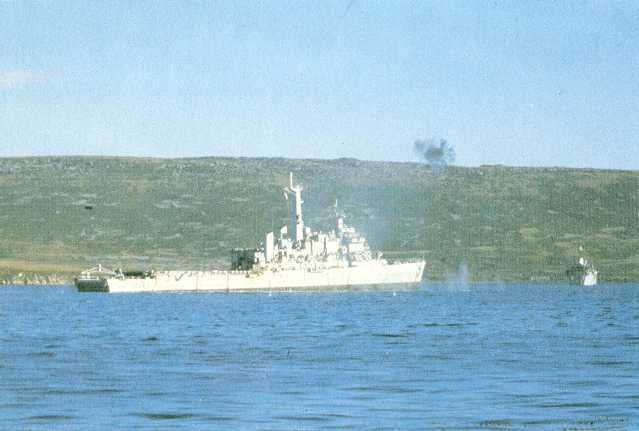
Falklands War 1982: picture of a British surface ship in all gray color sitting in medium blue water too close to the grassy green shore being attacked by Argentine aircraft who are visually aiming cannon fire and iron "dumb" bombs. Would painting the ship in blaze orange with a bull's eye be any more damaging?
Let's have some honesty here, ok?
Navies paint their ships in GRAY when water is BLUE because:
a. they are non-warfighting bureaucrats and ships primarily show the flag at civilian ports that we are not warmongers when we are
b. they are afraid of colliding with each other
Because...if they were serious about warfighting they'd paint their ships in the blue color of the ocean they are in or in "dazzle" patterns!
SHIP CAMOU GOOD
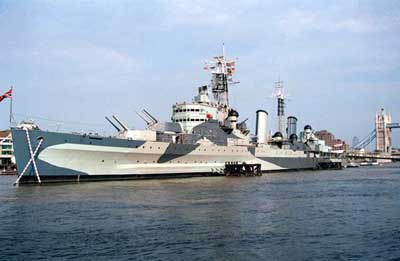
The HMS Belfast, a British ship that served in World War II, is now a floating museum on the River Thames in London. The ship is painted with a variation on the classic "dazzle" camouflage scheme.
Aircraft Camouflage, anyone?
U.S. Army helicopters in "Fulda Gap" green are getting clobbered in blue-sky and tan Iraq. Is this a surprise?
BAD!
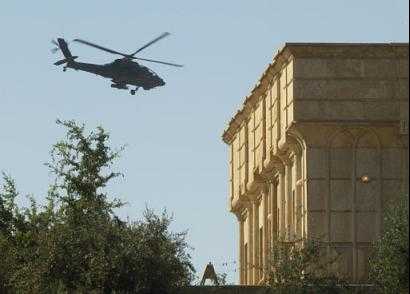
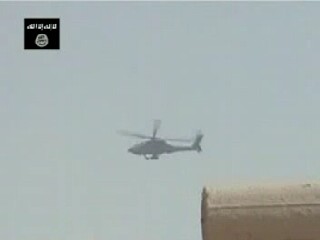
ALL-GREEN DATES BACK TO VIETNAM!
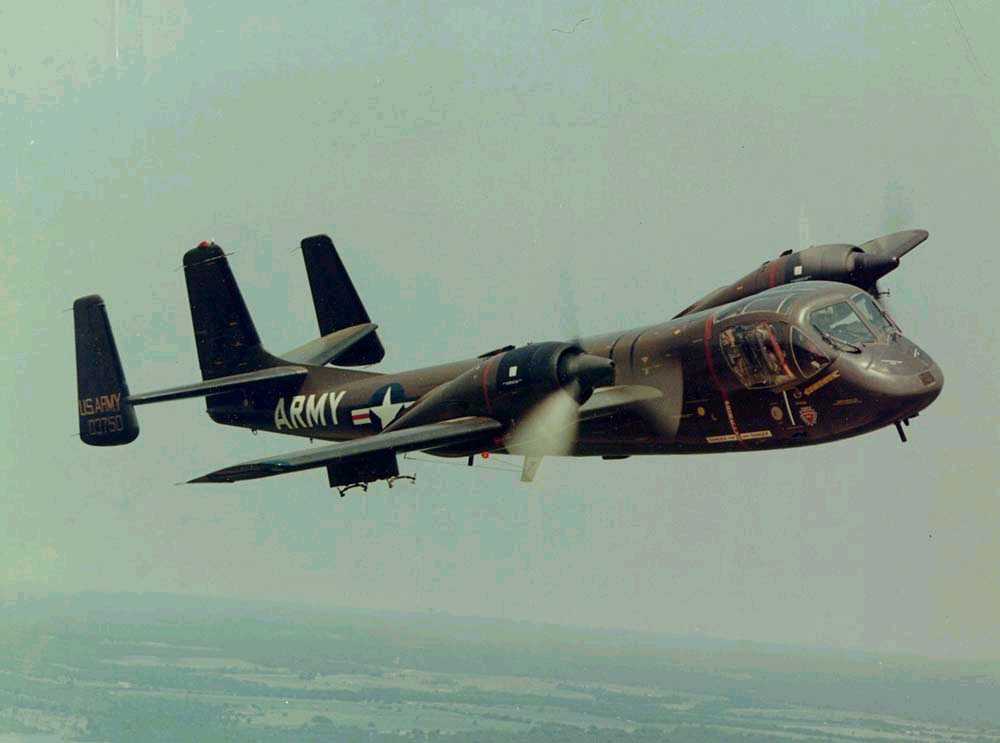
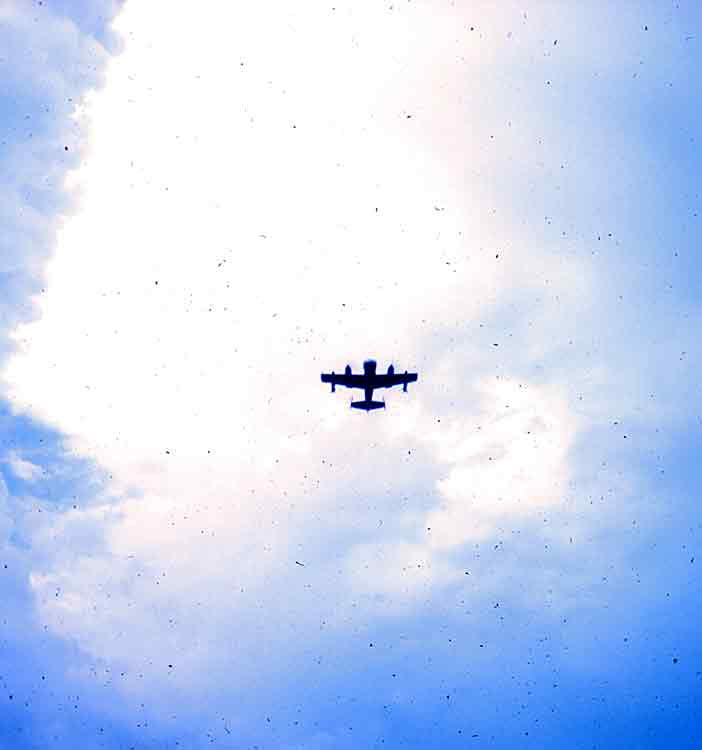
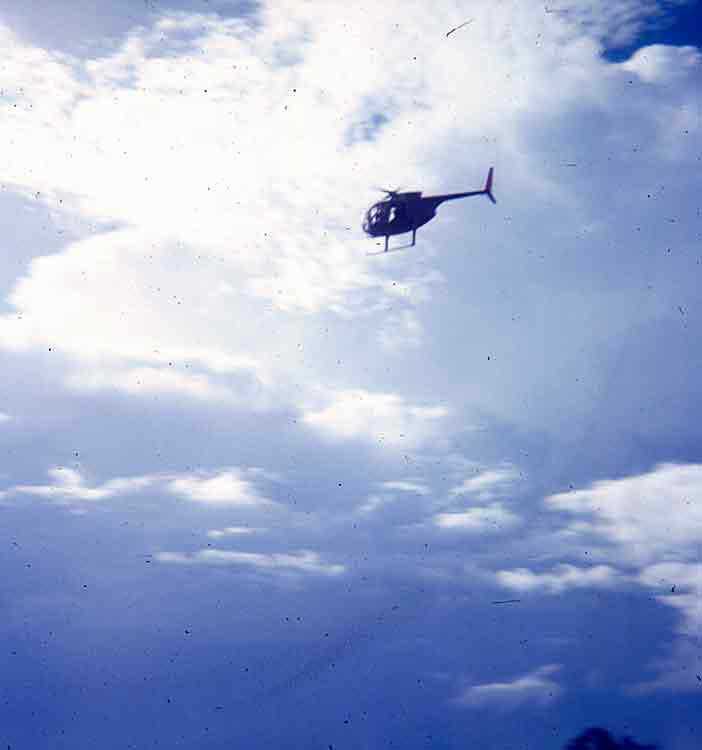
AT LEAST AIRCRAFT WERE GRAY ON THE BOTTOM IN WW2!
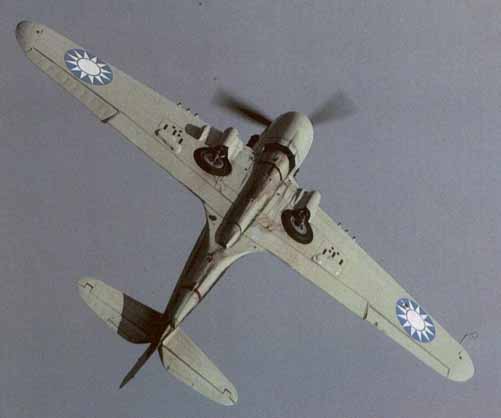
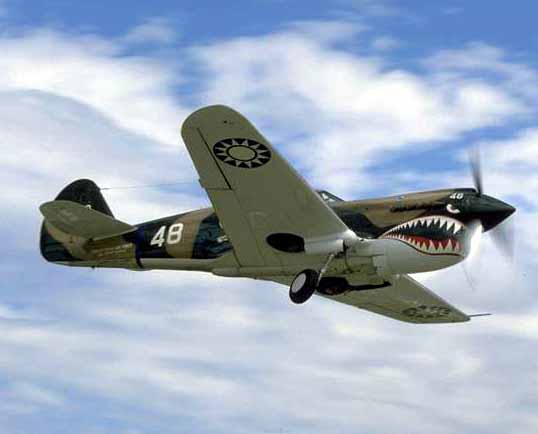
In WW2, we had the UNDERSIDES of aircraft gray to blend in when looking up at them from the sky...
Afghanistan
Which is better camouflaged? The C/MH-47 or the Aerostat or the Mi-26?
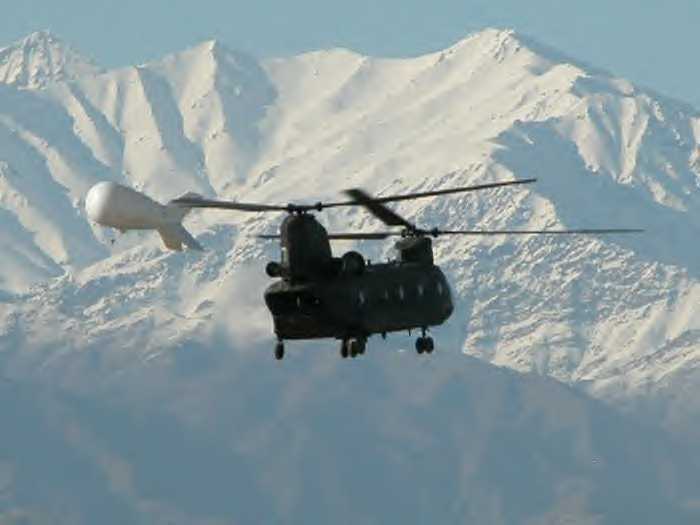
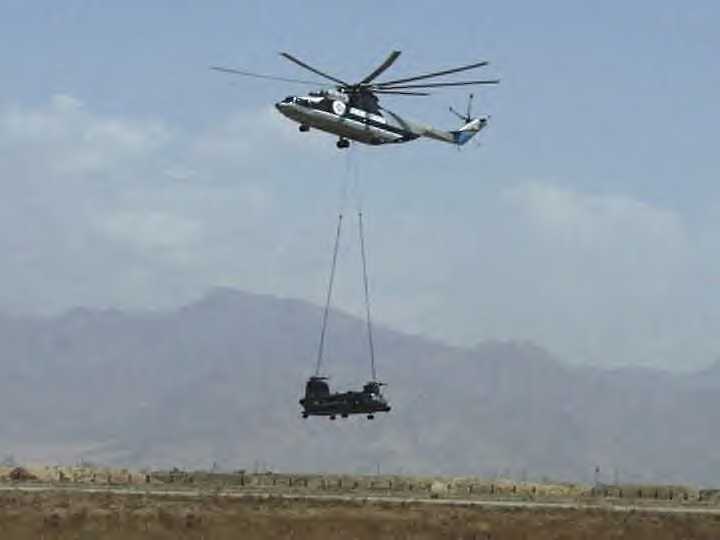
Not only are our overly complex helicopters too hard to maintain and literally grounded except for dire emergencies in Iraq, they fly too slow and too loud to survive enemy MANPADS and small arms-fire. Since some of you will not listen or accept this here's two audio/visual "reality checks" from Chechnya:
SA-7 MANPADS vs. Mi-8(?) Hip helicopter
www.combatreform.org/manpadsvsloudpoorcamohelicopter.wmv
SA-16 MANPADS vs. Mi-26 Halo heavy lift helicopter
www.combatreform.org/sa16manpadsshootsdownmi26helicopter.wmv
Next, examine our aircraft shoot-downs in Iraq:
www.reocities.com/militaryincompetence/americaniraqwarcasualties.htm
DARK GREEN AH-64 SHOT DOWN OVER IRAQ
 www.youtube.com/watch?v=VPGgwBr-OEs
www.youtube.com/watch?v=VPGgwBr-OEs
A recent DoD study concludes 76% of all U.S. helo shoot-downs took place during DAYLIGHT but the dumbasses persist in dark green helos! QUOTE:
"In OEF/OIF,? 76% of combat hostile action losses occurred during daylight hours"
"Study on Rotorcraft Survivability" Summary Briefing 19 October 2009 for Congress/DoD, by JAS, IDA
combatreform.org/SRS_Summary_Public_Release_10-19-09.pdf
1. Right off the bat, this should end all debate forever on whether we need much faster fixed-wing observation/attack aircraft. We do. We need to get off our asses and get some.
2. Immediately repaint ALL our helicopters in sky-gray to not help enemy gunners to spot and track and aim on them. The first video shows the fatal flaw of dark green helicopters in a blue sky background.
GOOD
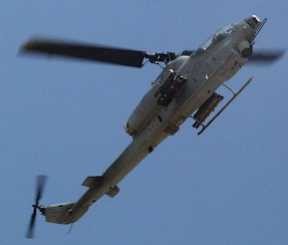
This INCLUDES THE ROTOR BLADES MOLDED IN GRAY! Here is proof this can be done, a Navy SeaHawk with gray rotor blades...if there is a will there is a way...
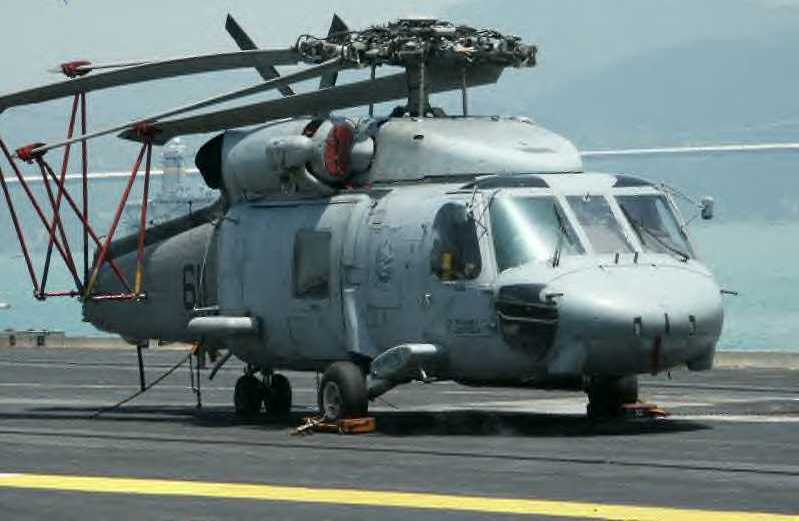
3. LISTEN to the audio on the first video. Silence our helicopters with NOTAR. If you lose 15% of anti-torque power get bigger engines. That's too fuking bad, anyway....it beats getting shot down and dying, doesn't it? If the two helicopters were in the right camouflage and NOTAR in the first video Mr. Allah Akbar in the bushes may not have even been alerted to go out and fire at them. Get a bigger engine by 15% or more in power, problem solved.
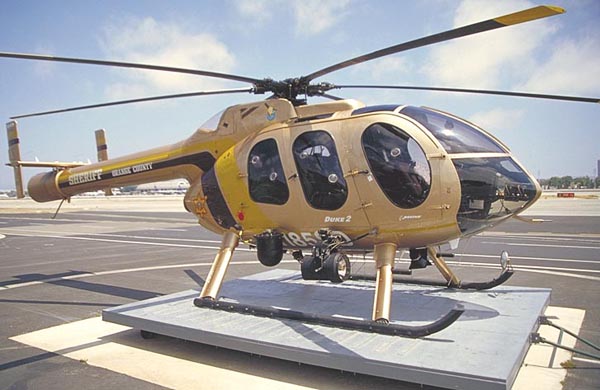
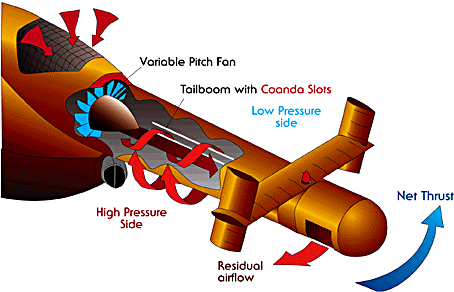
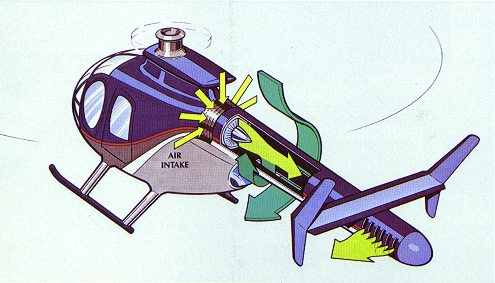
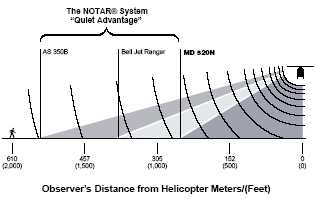
The Army should buy the MD520 NOTAR for its 368 x light scout helicopter program not the bullshit loud and slow Bell 407. Ditto the NOTAR MD90 for the LUH. Use BATTLEBOXaircraftTM to give them ground mobility and covertness.
Here's a pic of a well-camouflaged GRAY MD90:
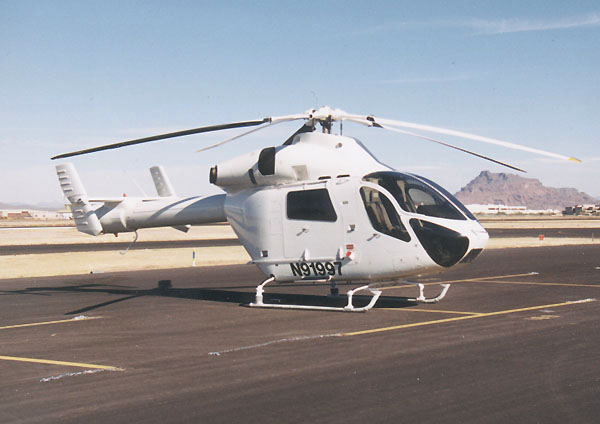
 www.youtube.com/watch?v=W4mGpefBT9w
www.youtube.com/watch?v=W4mGpefBT9w
How much does it cost to paint your helicopters in sky camouflage so they don't get shot-down and the men inside killed? The cash-strapped British can do it, what's our excuse?
How much does it cost to bury the dead, medical care any maimed survivors and replace the aircraft?
Is the wisdom, "An ounce of prevention beats a pound of cure" still an American proverb?
Or are Americans completely permeated with BS today?
combatreform.org/braveamerican.htm
Here is proof the U.S. Army can sky-camouflage its helicopters; a PROFESSIONAL COMMANDER IN THE SCARNG DID IT.
 www.youtube.com/watch?v=Jnz6Q6HANA0
www.youtube.com/watch?v=Jnz6Q6HANA0
4. Immediately supply EVERYONE on board every fuking U.S. military aircraft bail-out parachutes. In both video-shoot downs there was plenty of time and altitude to bail-out and survive the MANPADS strikes. Details:
Why No escape from U.S. Military Aircraft?
5. Immediately start converting our helicopters to Piasecki VTDP/wings so they fly faster at 200 mph to be less vulnerable. This will take some time so there's no excuse why steps 1-4 cannot be taken TODAY.
The video below of French marine light scout helicopters flying nap-of-the-earth (NOE) raises more questions than they answer:
www.combatreform.org/NOEtroupesdemarinealat.mpg
1. If Moslem SA-16 MANPADS gunners were in the foilage below would they have been able to knock the French helos down?
2. What would the green French helos look like FROM THE GROUND?
3. From the air, if the French insignia were subdued and clear canopies tinted the Alouette scout helos would be hard to spot from an enemy nation-state fighter plane...but is this the #1 threat to western civilization these days?
Another problem area is aircraft camouflage high in the sky. Its been found that LIGHTS--actually lighting up aircraft overhead will render them visually invisible. Sky-blue paint coverings also work well and the USAF is to be commended for painting all their aircraft in a light gray/blue color for camouflage.
Sky Camo: the OA-37B "Dragonfly": Vietnam, Panama is in service today
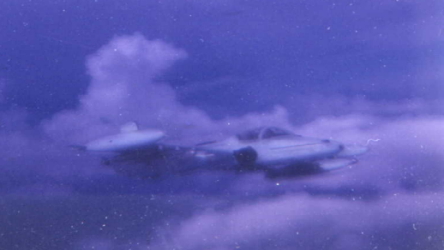
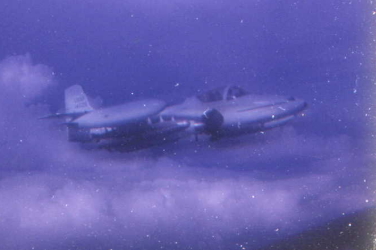
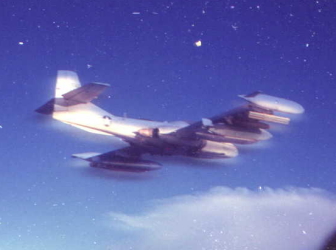

During the Vietnam War, USAF A-37B Dragonfly attack jets experimented with sky blue camouflage paint schemes, and it worked very well. Why not on Army aircraft and parachutes?
While the stupid U.S. Army continues to fly "Fulda Gap" Green helicopters in broad daylight in desert tan Iraq IN ACTUAL COMBAT and then wonders why they are getting shot down, the enemy preparing for war camouflages its aircraft properly:
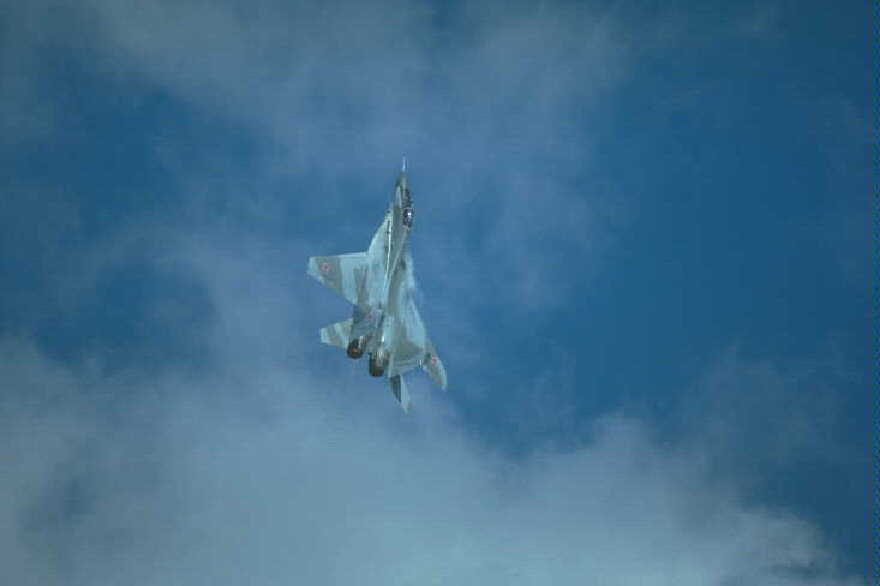
Australian Airpower expert, Dr. Carlo Kopp, PEng Defence Analyst and Consulting Engineer Editor: Air Power Australia @www.ausairpower.net writes:
"Some observations on camouflage:
1. Painting the lower side of any aircraft in light colours is mostly ineffective. A viewer on the ground looking at an aircraft at high altitude sees a bright target against the sky due to the double reflection effect of light being bounced off the ground. At lower altitudes eg; applicable for helos the brightness of the sky is always greater under clear sky or backlit cloud conditions than any light colour applied to the bottom of the aircraft.
2. If you apply a light colour to the lower surface of any low flying aircraft (or helo) an observer in another aircraft or on elevated terrain above the aircraft will gain a visual cue from any banking maneouvre ie a 'flash' of the light colour. This cost the lives of many USAF pilots in Vietnam.
3. Generally speaking, dull medium and dark greys painted wraparound top, sides and bottom seem to be most effective at providing a good compromise in making the aircraft/helo hard to spot at all altitudes, and against terrain.
4. Not sure there is any real advantage in going for 'thematic' camouflage colours ie desert tans, greens etc. These are only effective at very low altitude when the background is similar in hue/brightness. How often can you guarantee this set of conditions? This camo style evolved during the WWI era mostly to aid in hiding parked aircraft on the ground.
One of my friends many years ago was involved in a trial comparing the effectiveness of the original TAC thematic camouflage ie Green/ Olive/ Tan/ Black vs Gunship Grey, for low altitude flight. Not only was the Gunship Grey bird harder to spot, but also changes in attitude were more difficult to discern by the observer.
Conclusion - boring dark blue greys seem to work best. Everything else loses something in exchange for an advantage under some specific set of conditions.
Cheers,
Carlo"
http://jmrc.tripod.com/fa/stealth/stealth1.htm
Stealth aircraft own the night. Now they want the day.
By Steve Douglas & Bill Sweetman
ILLUSTRATIONS BY JOHN FRASSANTO & ASSOCIATES
Disappearing Act
Future aircraft such as Lockheed Martin's proposed Joint Strike Fighter might use visual stealth to blend into the sky. Sensors would measure the sky's brightness and hue and electrocromic coatings applied ove a white skin would change shade to match the background.
Lockheed Martin's F-117A Nighthawk stealth fighter was the star of the Gulf War, flying behind enemy lines to hit Baghdad targets with pinpoint accuracy. At night, the F-117 was unstoppable. But by day the black jet stayed on the ground.
The F-117 isn't fast enough to outrun missiles or agile enough to dodge them, and it can't fight back because it's armed only with bombs. These limitations don't matter at night, because the F-117's stealthy shape enables the aircraft to avoid detection by enemy radar. But in the light of day, the enemy can see the black plane against the sky, and can take aim without the help of radar.
F-117 pilots train almost exclusively for night missions, and the darker it gets, the happier they are. But this is a compromise at best. In the summer, when there are only a few hours of darkness, a fighter like the F-117 can fly only one sortie per day. And the darkness that hides the F-117 also hides its targets.
Air Force generals would love nothing more than a stealth aircraft that would be invulnerable during daylight hours as well as at night. And as POPULAR SCIENCE has learned, military engineers are already hard at work on the technologies needed to build such a plane special lights, coatings, and other technologies under investigation could not only make future fighters disappear from radar screens but could also make them almost completely invisible to the human eye. By the early 2000s, stealth may be practical in broad daylight. Today's experiments exploit a principle that was demonstrated half a century ago, in a secret project code-named Yehudi. In that project, engineers mounted lights on an anti-submarine aircraft make it harder to spot against a bright sky.
Daytime Running Lights
Today's experiments with visual stealth have their roots in a 1943 U.S. Navy project code-named Yehudi. The intent of the program, which was highly secret at the time and came to light only in the 1980s, was to give Navy patrol aircraft a better chance of sinking enemy submarines. During 1942, German U-boats took a heavy toll on merchant marine shipping off the East Coast of the United States. Aircraft scrambled to attack the U-boats, but submarine captains called for crash dives whenever they spotted approaching planes. By the time an aircraft got close enough to fire upon a sub, it had disappeared beneath the surface of the ocean.
Yehudi's inventors needed a way to make the anti-submarine aircraft harder to see, and they realized that camouflage paint wouldn't do the job: Regardless of its color, the airplane would stand out as a black dot against the sky. The only way to make the plane less visible was to light it up like a Christmas tree.
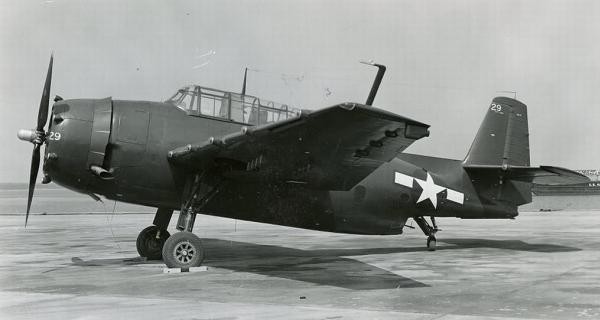
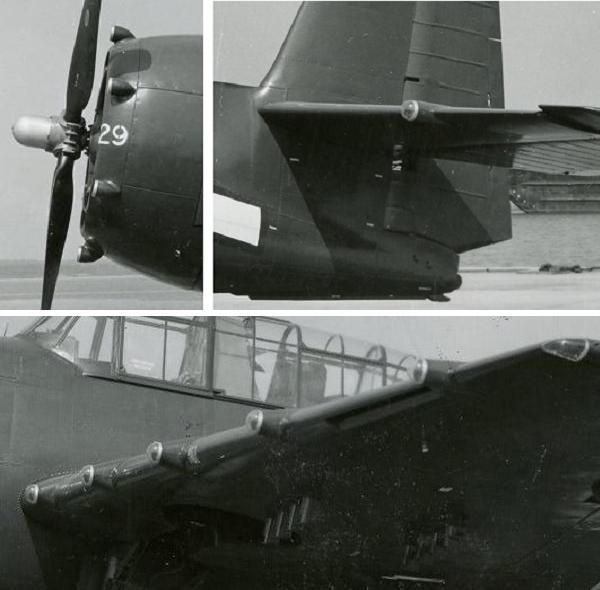
The engineers fitted a portly TBM-3D Avenger torpedo-bomber with 10 sealed-beam lights installed along the wing's leading edges and the rim of the engine cowling. When the intensity of the lights was adjusted to match the sky, the Avenger blended into the background. Tests proved that the Yehudi system lowered the visual acquisition range from 12 miles to two miles, allowing the Avenger to get within striking distance of its targets before they submerged. A B-24 Liberator bomber was also modified, with similar results.
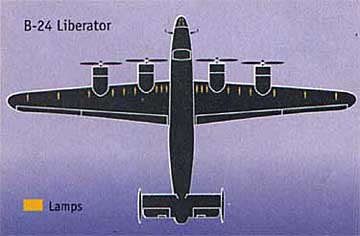
Lamps mounted on the bomber made it less visible to enemies.
Yehudi
was not put into production, because better radar had already enabled Navy airplanes to regain the tactical advantage, but the idea was revived after air battles over Vietnam. Concerned that the big F-4 Phantom could be seen at a greater range than its much smaller Russian adversary, the MiG-21, the Pentagon started a program called Compass Ghost. An F-4 was modified with a blue-and-white color scheme and nine high-intensity lamps on the wings and body reducing the detection range by as much as 30 percent.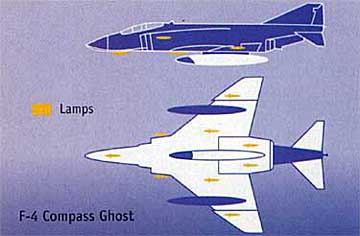
Lamps and a blue and white paint scheme camouflaged the F-4.
Similar technology was used in the Vietnam War to shorten the distance at which the F-4 Phantom could be detected. Lighting systems were available when Lockheed's Skunk Works was awarded the contract to build Have Blue, the world's first stealth aircraft and the test bed for the F-117A, in 1974. The breakthrough that made Have Blue possible was the ability to reduce an airplane's radar reflectivity to less than one-hundredth of what was considered normal in the 1960s, slashing the effective range of enemy radar. Reducing the radar reflectivity so radically meant that the designers of Have Blue also had to reduce its visual and infrared signatures, according to a rule of thumb known as "balanced observables."
This rule says that a stealth aircraft should be designed so that every detection system arrayed against it has roughly the same range. There is no point in building an airplane that is invisible to radar at five miles if optical sensors can see it at 10 miles.
Have Blue was the prototype for an aircraft that would make its attack run at a moderate altitude of 10,000 to 15,000 feet, close enough to designate the target accurately, but high enough to elude medium-caliber gunfire. At the time, the designers' goal was an aircraft that would be as stealthy in daylight as at night. The designers realized that visual detection depends on a number of factors, including the position observer, his angle of view, the position of the sun, and the presence of haze or clouds. Altitude is extremely important. A jetliner at its cruising height always appears brightly lit in the sky, because dust and moisture in the air beneath the aircraft scatter light onto its underside. There are relatively few particles of dust and water in the thin air above the airplane.
So the higher the plane flies, the more light is scattered onto it, and the darker the sky behind it. The dark color that absorbs as much light as possible provides the best camouflage for a high-flying airplane.
So the higher the plane flies, the more light is scattered onto it, and the darker the sky behind it.
The dark color that absorbs as much light as possible provides the best camouflage for a high-flying airplane. But even the jet-black Blackbird and U-2 spy planes look brighter than the skv when seen from below as they cruise at 80,000 feet. At lower altitudes, there is less light-scattering atmosphere below the aircraft, so lighter colors provide the least contrast.
Even this light gray C-17 at low altitude is dark underneath and needs Yehudi lights
For Have Blue, Lockheed devised a scheme of graduated grays, lighter on the bottom and darker on top. The aircraft's designers also planned to test light apertures, which would be installed on the sides and undersurfaces of the airplane, about two feet apart. (Seen from a distance, the individual lights would blur into a single KILLERBEES4Image.) The apertures would be connected to a central light source by fiber-optic lines, and controlled by sensors on the upper side of the aircraft. The sensors would "read" the background light and adjust the skin's luminance to mirror it. This system never flew on Have Blue, possibly because the first aircraft was lost in an accident. Work on visual stealth continued, however. In 1980, the Air Force tested a small aircraft, probably unmanned, under a project known as IMCRS (what the acronym stands for is not known). The aircraft's lower wing skins incorporated slit-like Fresnel lenses to beam light ahead of and below the aircraft, in the direction of the most likely threats.
The IMCRS experiment may have been related to a Defense Advanced Research Project Agency program known as Active Camouflage. Under that program, a small, powered drone was fitted with fluorescent lamps and tested at the White Sands Missile Range with so much success that the project has since been reclassified as Top Secret.
Neither of these lighting systems were adopted for stealth aircraft in the 1980s. They were complex to install, and their effects were difficult to predict and test. Carefully designed conventional camouflage worked well enough under most circumstances to ensure that an aircraft would not be visible before a radar could detect it.
So why were the first F-117s painted soot black instead of a toned gray scheme that would provide better camouflage? One Lockheed engineer recalls that the commander of Tactical Air Command "didn't believe that real fighter pilots flew pastel-colored airplanes." One Air
Force source close to the program says that some senior officers doubted the F-117 could survive in daylight, and wanted to ensure that nobody would try it.
Color Counts
Light colors would be optimal for the underside of the future Joint Strike Fighter which will fly relatively low for ground attacks. Some experts say the best color for a fighter Is pink, but pilots may object.
The higher an aircraft flies, the darker it should be to hide from enemies. The F-117 was originally painted a dark black, but has recently been seen in gray. Black is one of the least stealthy colors for daytime flying at medium altitudes. In fact, the British Royal Air Force is painting its trainers black to make them more visible and reduce the risk of collisions. Black isn't much good at night either, because there is nearly always some light from the moon. That's why the latest F-117s have been seen in a more sensible gray color.
The B-2 stealth bomber's underside is a very dark gray. Many people think that it is designed to attack only at night, like the F-117. This is unlikely, because the B-2 was designed to bomb Russia, and the most direct route from the United States lies smack across the Arctic Circle, where the sun shines 21 hours a day for a large part of the year.
The B-2's underside is dark because it cruises at altitudes as high as 50,000 feet, where a dark gray blends into the sky. It does not use an "active camouflage" lighting system, but it may have an upward-facing light sensor that tells the pilot when to increase or reduce altitude to match the changing luminance of the sky. It appears likely that active camouflage will make a comeback in the 2000s.
Improvements in radar stealth have reached a point where visual and infrared signatures are the dominant concerns. One sign of increasing interest in the non-radar aspects of stealth is that the Air Force has commissioned a new flying laboratory called FISTA II (Flying Infrared Signature Technology Aircraft), to replace a vehicle that has been used since the early 1960s to measure the heat signatures of airplanes. A modified tanker aircraft, FISTA II carries not only ultra-sensitive infrared KILLERBEES4Imagers, bit also a visual imaging system, an indication that the Pentagon is becoming serious about visual stealth.
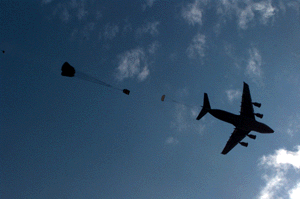
Modern follow-ons to Yehudi are both more effective and easier to install. Instead of individual lights, the Pentagon has tested thin fluorescent panels of the type already used on military aircraft for nighttime formation flying.
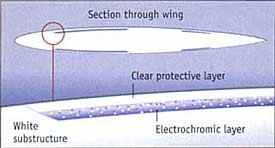
A civilian technician working at the isolated Tonopah Test Range airstrip in Nevada says he witnessed a test of an F-15 Eagle with a prototype system. According to the technician, the fighter virtually disappeared as it lifted off the runway. "We had no problem acquiring the aircraft from about a mile away," the technician recalls, "but at distances over two miles it became harder and harder to spot. Although it was a crude system, it was pretty impressive. Trying to pick out the aircraft against a clear blue sky was next to impossible. The only time we could easily spot the aircraft was when it produced an unexpected contrail." (Contrails form when the water vapor in aircraft exhaust freezes.
Are We Using our Most Advanced Stealth Technologies on U.S. Military Aircraft? Aerospace Craft?
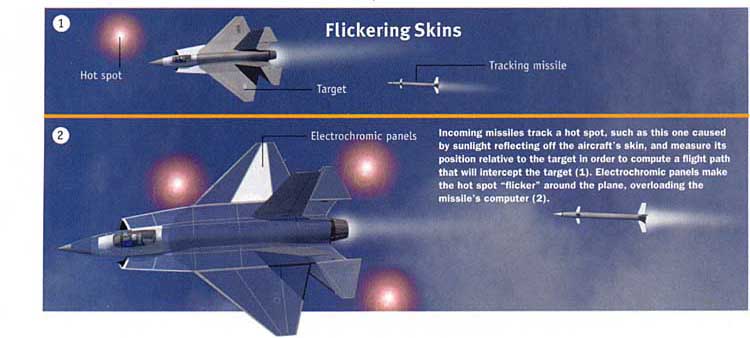
 www.youtube.com/watch?v=pWRQVyC-9e8
www.youtube.com/watch?v=pWRQVyC-9e8
What Color is My Parachute?
Another problem area is parachute color. While Special Operations units use a sky-blue MC-4 parachute, Airborne units are still using olive drab green round parachutes. The new ATPS parachute should be a light brownish gray color to blend in with the sky better and the ground after the jump is over. One of the biggest concerns is the exposed position a Paratrooper is in descending under canopy. This can be minimized by jumping lower and CHANGING THE COLOR of the T-21 parachute to blend in better with the sky. I believe instead of dark olive drab we should go with a lighter color, but in probably an earth tone BROWN so on the ground, the canopies blend in with the soil/vegetation. The following picture has been modified to illustrate possible colors. The Army's New ACU seeks one camouflage pattern for both dry desert and wet woodlands. Should our parachutes also be in ACU campat? What do you think? E-mail us. itsg e-mail addy
Box-it: "Battle BoxesTM" for tanks and aircraft on the ground
Who says you have to let the enemy see what you are doing? Ship your tanks and aircraft in sea/air/land ISO containers. But don't stop there. Transport them on trailers in armored ISO "BATTLEBOXESTM" and uncover them before striking. Give aircraft ground mobility so they can operate from unpredictable forward bases not vulnerable, fixed bases.
www.combatreform.org/fighterinabox.htm
PICTURES:
1/72 scale models of the OA-37D "Fighter-IN-A-Box" (FINAB) ISO container combat system
WHAT'S IN THE BOX? A TANK? A M113 GAVIN? AIRCRAFT? SUPPLIES?
ARMORED, ARMED PRIME MOVER
THE SYSTEM
MAINTENANCE IN AN ARMORED, CLIMATE-CONTROLLED ISO CONTAINER
AIRCRAFT LEAVES ITS ARMORED BOX ONLY FOR MISSIONS TO PRESERVE SECRECY
FOLDING WING OA-37D DRAGONFLY SMALL ENOUGH TO FIT INTO ISO CONTAINERS
GETTING READY FOR ACTION
TOP-VIEW OF SYSTEM
STOL CAPABILITIES OF DRAGONFLY MAXIMIZE COVERT, ARMORED GROUND MOBILITY OF ISO BOX/TRAILER/PRIME MOVER SYSTEM
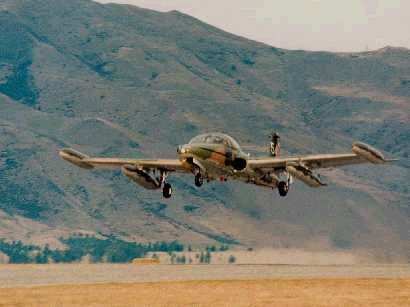
 www.youtube.com/watch?v=5qdHqBKbaAI
www.youtube.com/watch?v=5qdHqBKbaAI
Details: www.combatreform.org/STRATEGICMANEUVER/battleboxes.htm
Defeating Night Vision Devices: it takes constructive effort on our part
Night-vision and near-infrared viewers have forced the designers of camouflage to include the NIR region of the spectrum in their considerations and IRR (infrared-reflecting) coatings have been known for several decades. The so-called chlorophyll edge around 780 to 900mm wavelength shown by natural vegetation means that poorly designed camouflage coatings may be detected by having different reflection properties in this region of the EM spectrum. Luckily, several green pigments have reflection spectra that closely match natural greens. Nazi Germany introduced such IRR pigments into their camouflage uniforms during WWII. America did not introduce NIR protection until the Vietnam War in 1965, a year after the "Starlight Scope" passive night-vision viewer was first used by American Special Forces in action.
Conversely, light khaki browns and sand colors for desert camouflage usually tend to reflect highly in the NIR and this stands out against the lower reflecting natural sand and stone background. U.S. forces introduced a pixellated "night-black" design in the early 80's. The pseudo-random pixellation was intended to degrade night-vision goggle (NVG) image resolution by imposing a clashing pixel pattern over the detector image such that detection of straight edges and solid fill-areas required more detector pixels to resolve adequately. Mostly, it has proved simpler to avoid high-reflecting dyes and pigments in such color patterns.
Thermal imagers and thermal IR camouflage
Increasingly, thermal properties of personnel and targets are utilized as a means of detection via TI (thermal imagers). Mainly, these are cameras sensitive in the medium and far infrared regions of the spectrum (MIR 3 to 5 micron wavelength and FIR 8 to 12 micron wavelength). As any schoolboy knows, IR radiation is more or less strongly absorbed by atmospheric species such as water vapor and carbon dioxide. Thus, over any meaningful target observation range, only regions where such strong absorbptions do not occur will be useful for observation in the thermal IR ranges and these tend to fall into bands from 1 to 2 micron, 3 to 5 micron and 8 to 12 micron wavelengths.
Boltzmann's Law relates infrared wavelengths to object temperatures such that 1 to 2 microns is most useful for observing hot objects, around 500 degC upwards, 3 to 5 microns is best for warm objects around 50 to 200 degC or so and 8 to 12 microns is best for room temperature objects around -20 to +100 degC or so. Most thermal imagers available to military forces today operate in the MIR and FIR regions.
The challenge posed by the possible presence of TI equipment in the battlefield is rather problematic. Every man-made and natural object emits IR radiation with a distribution determined by its surface temperature and emissivity. Thermal imagers can often discriminate temperature differences as small as 0.1 deg C or less. So for example, hiding a hot battle tank engine or warm infantryman from TI when the surroundings may be 20 or more degC cooler (or warmer) is difficult in the extreme! Added to this, the emissivities of natural objects and vegetation are often different from those of man-made objects and can make matters worse in poorly designed systems. For example, military vehicle windows often carry vacuum-metallized surfaces for purposes of demisting and/or radar-reflection. Such surfaces often tend to have very low emissivities in the thermal bands. Low emissivity equates to high infrared reflection and thus the windows can reflect a very cold sky image (typically -50 deg C for a clear blue sky) into a scene which is generally much warmer. The result can be seen in thermal imagers as a clearly delineated window shape, which can defeat any camouflage scheme applied to the rest of the vehicle.
Our Lease is up: We no Longer "Own the Night"
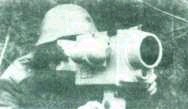
Serbian AT-S thermal sight used on AT-3 ATGMs.
KFOR Handbook
Field-Ready Reference Publication
July 1999
DoD 2630-011-99
http://155.217.58.58/cgi-bin/atdl.dll/fm/3-50/Ch7.htm
U.S. Army FM 3-50 Chapter 7 states:
"VISUAL- INFRARED OBSCURANTS
Today virtually every nation and non-state organization has access to-- advanced tactical sensors for target acquisition (thermal imagers) and intelligence gathering surveillance systems (ground and air reconnaissance).
Precision-guided munitions delivered by artillery, missiles, and aircraft that operate in the IR region of the electromagnetic spectrum.
These capabilities are available through internal manufacturing or purchase on the world market.
These thermal imaging sights allow them to acquire and engage targets through visual smoke, at night, and under adverse weather conditions."
Its increasingly obvious that the bad guys have image intensifier night vision devices and now thermal imagers (FLIR). The Serb AT-3 ATGM has a thermal sight.
ITS CLEAR U.S. ARMY FORCES MUST FIELD INFARED CAMOUFLAGE FOR ITS GROUND VEHICLES AND TROOPS IMMEDIATELY.
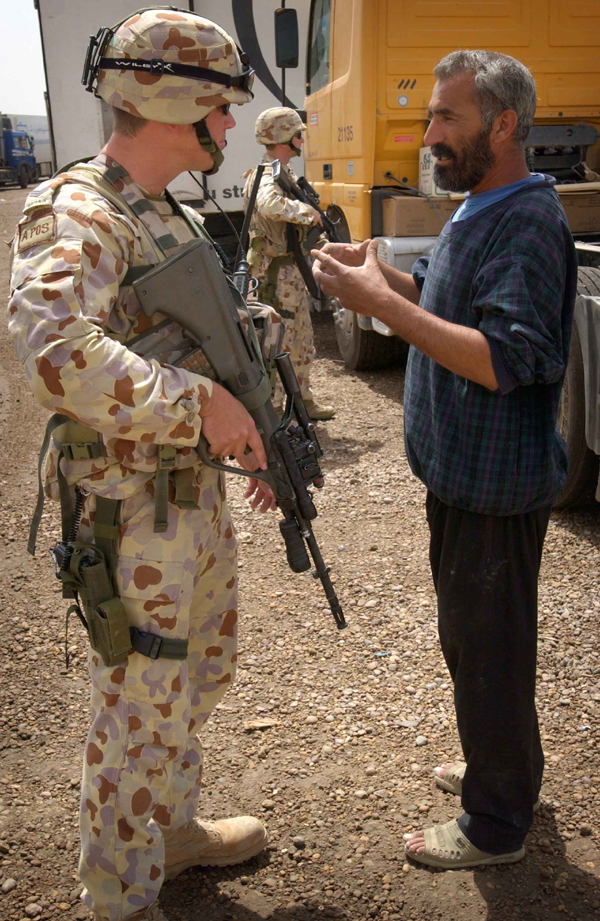
The current U.S. Army fixation with "tidy" vehicles must end. We do not fight on parade grounds. Infared camouflage coverings exist for combat vehicles and must be bought and applied. Vehicles will no longer look smooth and will look like a "chia pet". This is too damn bad. FORM MUST FOLLOW FUNCTION.
The current paradigm that snipers must make their own ghillie suits, Bob Villa style is fine for TRAINING and a basic skill. But its clear that makeshift will not defeat enemy thermal imagers and we must buy manufactured "thellie" suits and half torso capes that fit into a buttpack to evade enemy thermal imager detection/targeting.
Multi-spectral Smokescreens created by vehicles and grenades must become an aggressively pursued tactic in peacetime and war even if it acts as a "trump" that may result in battles won without the infantry getting lots of ego-gratifying trigger time. We must also regain the capability of airborne smokescreens for forced entries and airborne/air assaults.
Solar reflective covers, Covert illumination, Low-observable (LO) radar absorber sheet (for Navy vessels), Thermal recognition tape, Covert identification materials, Erosion-resistant LO material (for aircraft wing leading edges, etc), Sprayable LO coatings, LO transparent radar reflective film, Triply-low-observable covers (for camouflage in thermal infrared, radar and visual bands), LO transparent radar absorber windows, Multi-spectral camouflage netting, Structural LO materials, LO panels (easily removeable and redeployable applique), Infrared camouflage paints, LO lightweight foam, Bulletproof windows, Tabard IR camouflage suits and IR camouflage observation post (OP) covers and hides.
Many of these products rely on or include similar elements of thermal insulation and reflection to isolate the target from sources of heat that can either give away a target's position and identity to a thermal-imager equipped observer or can produce uncomfortable or unsafe hot working conditions for personnel, stores and equipment.
Diffusion
Diffusion of heat can be accomplished through arrangements of slits or holes incised into a covering net, often patterned so as to resemble leaf structures, enhancing the camouflage effect. Air circulation cools the target under the netting.
Reflection of heat can be either of solar radiation away from a target surface, via coatings with low thermal emissivity/high reflectivity or of, say, engine heat, back into the target hidden under a camouflage cover to protect it from heat seekers and thermal imagers. The principle is to insert a (partial) barrier to thermal transport allowing control of conditions on either side of the covering structure. Insulation layers incorporated into protective covers serve to both isolate both the hot target from possible detection and shield the target (and occupants) from excessive solar warming. Insulating layers slow thermal transport which may be sufficient to allow control of conditions (eg. modification of target thermal signature or cooling of target vehicle interior
Much work since the 1920's has involved coating colors, with the premise that lighter colors tend to reflect more solar energy away from the coated surface. Surface smoothness also has some effect, with rougher, darker surfaces tending to absorb more heat. The vast majority of coatings have high thermal emissivity, due to their constitution (organic binders, pigments, additives - all usually with high emissivity values over the range 1 to 30 micron). Metallic pigments and shiny metallic surfaces have generally much lower emissivities and are more effective heat reflectors (eg. American Airlines - the polished aluminum finish can reduce total cooling requirements by a considerable margin in situations where the aircraft may be parked on a runway in full sun for several hours). This concept has also been exploited in the so-called "thermal survival blankets" often advertised on the web (metabolic heat reflected back into the body by the metallized surface).
In the defence context, coatings formulated with metallic pigments, for example, require to be strongly (and darkly) colored for visual camouflage purposes. The challenge is to hide the shiny metallic visual appearance without also "hiding" the thermal reflection. Even a few microns of intervening coating material is sufficient to absorb infrared radiation over the normal thermal bands (1 to 2, 3 to 5, 8 to 14 microns) so binders, coloring pigments and other additives must be chosen with care and extreme hiding power in mind.
Taking the example of thermal identification tapes, the approach is to use an aluminized tape with a very thin ink film on the outer surface, less than 5 microns thick. Ink formulators are quite capable of producing strong colors and near total hiding power in such thin films.
In other examples, the formulation may require the use of specially treated metallized particles with lowered visual reflectivity or ordinary metallic pigments with controlled orientations within the film so that minimum coloring additions are necessary, even then preferably using highly thermally transparent dyes and binders. Such coatings may be required to coat textiles for solar protective covers for ammunition or vehicles. Additional considerations of coating durability in service, resistance to weathering and solvents, UV resistance and marring all complicate the formulation requirements.
A further complication in the case of cockpit canopy covers is the need for light weight and avoidance of scratching of the fairly soft perspex canopy surface by the cover material itself or by the fastenings used to keep it in place. Nevertheless, with proper design (eg. "soft-touch" coated engineering nylon elasticated clips) it is possible to produce a cover with the potential to reduce internal heating due to solar radiation from nearly 70 °C to about 35 °C in typical desert conditions (depending on the construction and outer coating chosen). Similar results are achieved with armored vehicle covers, bearing in mind the need for an alternative cover construction design for light (aluminum) armored vehicles compared to heavy armored tanks, resulting from different thermal mass and heat transport considerations. Covers can be tailored for specific vehicles or equipment or can be net-form for static situation deployment.
Evading death in the night
Its clear that when even the Serb Army has thermal imagers (TI) that its time we assume that our foes will have the ability to detect our men and vehicles by heat differentiation.
Thermal imaging is an invaluable aid on the battlefield at night. it allows you to see friendly and hostile personnel, vehicles and equipment, even in total darkness, through smoke or thick fog.
TI is also widely used by the Police for surveillance, tracking fugitives or locating bodies, and by the Fire service for finding unconscious people in smoke-filled buildings.
Unquestionably TI is effective and has changed military and emergency service operations. However it is not a "wonder weapon". It needs a human eye and brain to evaluate the images, which at long range can appear merely as hot 'blobs' on a screen or scope. It can be defeated by new defensive equipment, sensible Standard Operating Procedures (SOPs) and good tactics.
Thermal imaging, or TI, works in the visible band of 0.4 to 0.7 microns and from 0.7 to 12 microns in the infrared spectrum. It detects the heat patterns given off by animate and inanimate objects by day or night. The early equipment in the late 1970s was bulky, a little like a portable television with a compressed air cooling system which had to be topped up regularly.
By the 1990s short range TI like that developed by the Hughes Corporation in the USA and Thorn EMI (now part of Pilkington Optronics) using mechanical cooling was compact enough to fit into crew-served weapons. The Pilkington Lite weighs about 3.5kg and can be fitted to 12.7mm machine guns and Milan firing posts.
Thermal imaging was first used operationally in the Falklands in 1982, and was the principal night vision equipment for tanks, AFVs and special forces in Operation Desert Sabre in the Gulf in 1991.
Surveillance and target acquisition by tanks and AFVs has changed dramatically since TI can see the heat from vehicles and people even through camouflage nets and vegetation. Even the ground over which a tank has driven shows where the track pressure has warmed it, like the wake of a ship.
Defensive equipment includes smoke and camouflage nets/suits. TI can see through the conventional smoke screen fired from the 66mm projectors fitted to AFV hulls and turrets. These projectors are now loaded with grenades like the U.S. M76, which produce a smoke-screen of hot fragments which descend slowly, and which can be topped up with additional salvos.
Modern tanks are now fitted with laser warning systems, so as soon as the tank detects that it has been "lazed" by the rangefinder of a hostile AFV, it fires infrared (IR) smoke to cover its withdrawal and manueuvers into cover.
TI camouflage nets, like those produced by Barracuda of Sweden and Bridport of the UK, must not completely conceal the thermal picture or "signature" of a man or vehicle. If they do, this will produce what is known as a 'black hole' - an area of cold, which stands out against the natural clutter of heat patterns. Complete thermal screening can also act like baking foil, cooking the vehicle in its own heat.
TI camouflage nets must conceal in the visible range as well as the 3-5 and 8-12 micron range, and allow heat to escape. This is done by using heat screening panels which have a system of screened vents which allow heat to be dissipated, as well as conventional nylon netting with polymer scrim.
Teledyne Brown of Huntsville, Alabama has "Thellie" suits to defeat TI.
The 1st TSG (A) has proven that bikes/carts can be visually camouflaged using ghillie strips during Operation Prove Tactical Mobility at Fort Bragg, NC in 1995. This can be taken a step further by the LRS team members wearing commercially-available "Thellie" camouflage suits that render them invisible to detection by enemy forward looking infared (FLIR) devices.
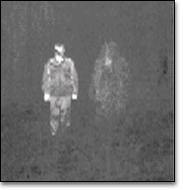
Teledyne Brown Thellie Home Page
Technological advances have greatly reduced the cost of infrared sensors, resulting in widespread use of very sophisticated surveillance and targeting devices by military forces throughout the world. Teledyne Brown Engineering, long an R&D leader in camouflage for visual and RF suppression, has developed products for countering these infrared devices.
Of particular value is the Thellie Suit, designed to suppress the signature of the human body in the visual through thermal infrared bands. This suit enables the wearer to blend into the background when viewed through the best performing infrared imaging devices.
The alternating pictures show images from visible and infrared sensors of a Soldier in standard field uniform (left) and in the Thellie Suit (right).
Constructed of lightweight fabrics in configurations that allow proper ventilation of body-produced heat, the Thellie Suit enables the wearer to freely and comfortably accomplish mission demands. The suit conforms to normal criteria placed on qualified military equipment. The material can also be in a poncho or blanket configuration.
The name "thellie" is a combination of "thermal" -- denoting the suit's IR suppression capability -- and "ghillie" -- the name for Irish and Scottish gamekeepers who used homemade camouflage suits to stalk game poachers.
This product is available only to authorized customers in U.S. Government agencies.
For additional information, contact:
Jerry C. Edwards
jerry.edwards@tbe.com
256-726-1000 ask operator to connect you
Nets, Suits and smoke are the hi-tech solution to TI. But even the most unsophisticated forces can evade TI somewhat by intelligent tactics and good SOPs. If you follow the basic rules of fieldcraft, you will go a long way towards defeating TI. Avoid open spaces and skylines by day or night, and use dead ground and cover when you are on the move. A patrol, exactly spaced, moving across the middle of a field at night, will stand out dramatically against the cool grass.
TI can see heat patterns through conventional camouflage nets and vegetation like thin hedges and scrub. But it is not an x-ray eye. Buildings, walls and even thick vegetation will conceal men and vehicles.
TI is most effective where the enemy is easily identified, for instance in the desert, open grassland, or the arctic. The most difficult is a built-up area, which may contain civilians and their vehicles. Heat patterns here will be enormously varied, with some buildings showing warm, and a confusion of blobs of heat from individuals, cars, trucks and even livestock. In this environment, Soldiers must avoid behaving in ways that act like a signature - like forming a queue for food, parading in three lines, or even using the slow skulking walk of men moving tactically.
Garages, barns and even multi-story car parks will help conceal APCs and tanks, which can be deployed as an armored quick reaction force (QRF). Houses can be prepared for defense and will not only offer protection against small-arms and shell fire, but also concealment from TI and other observation systems.
The techniques and equipment described above will assist the Soldier, but can the fugitive use them? Clearly camouflage nets and IR smoke will not be used by the man on the run. But the fugitive can employ simple evasive tactics which will go a long way to negating the advantage of a pursuing force equipped with TI.
In car or on foot, the evader should aim to blend into the thermal clutter from other people or vehicles. Busy towns and cities are therefore better than open countryside. If a car is being followed by a TI-equipped helicopter, underpasses, tunnels and even cuttings may offer cover and perhaps the chance to change vehicles. If the driver suspects that he is under surveillance, he should not behave in a way that will attract attention - erratic, slow or excessively fast driving is bound to attract attention.
For the evader on foot, a crowd or any solid cover from above or the side, will give a few moments in which he can shake off the "eye in the sky". TI does not perform well in falling rain, snow or sandstorms, and search aircraft may be reluctant to fly in these conditions anyway. An added benefit is that snow or sand covers tracks and muffles noise. Finally, bad weather makes guards and search teams less alert.
As with any observation system, TI is only as good as the operator. As ranges increase the image becomes attenuated - in simple terms, the target becomes less distinct on the scope, and appears as an indistinct hot blob. If this blob behaves like a law-abiding civilian blob, the operator will switch his attention to other areas.
In two words, one of the best ways to defeat thermal imaging is "act natural".
CAMOUFLAGE AS A STRATEGIC CAPABILITY
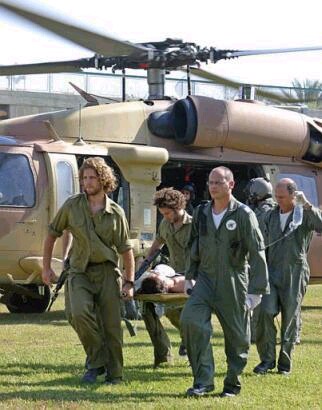
The early defeats we had handed to us by the Chinese invasion into Korea happened because they were effectively camouflaged from our aircraft.
North Korea Announces Year 2004 as "Year of Camouflage"
http://english.chosun.com/w21data/html/news/200407/200407220043.html
It was recently learned that North Korea designated this year as the "Year of Camouflage" and is strengthening the camouflaged tactics of its army, navy and air force in order to avoid South Korean and the U.S. intelligence nets.
According to in intelligence source, North Korea is constructing a large number of fake naval, air and army bases strengthening concealment facilities for existing bases.
The North Korean army constructed many concrete towers disguised as anti-tank emplacements near the Military Demarcation Line and created about 80 fake underground bases. On the other hand, its navy has recently been having conversations in code while maneuvering.
The reason for North Korea's camouflage is that it is known that camouflage instructions worked well in Iraq War. In addition, the nation seeks to free itself from the threat posed from newly introduced weapons such as unmanned "Predator" aircraft and bunker-busting BU-37 bombs.
Camouflage as key component of C3D2
www.dia.mil/Site5/Aboutdia/milthreats/sscibrief.html
The U.S. Defense Intelligence Agency (DIA) defines "Cover, Concealment, Camouflage, Denial and Deception (C3D2). Many potential adversaries, nations, groups, and individuals are undertaking more and increasingly sophisticated C3D2 activities against the United States. These operations are generally designed to hide key activities, facilities, and capabilities (e.g. mobilization or attack preparations, WMD programs, advanced weapons systems developments, treaty non-compliance, etc.) from U.S. intelligence, to manipulate U.S. perceptions and assessments of those programs, and to protect key capabilities from U.S. precision strike platforms. Foreign knowledge of U.S. intelligence and military operations capabilities is essential to effective C3D2. Advances in satellite warning capabilities, the growing availability of camouflage, concealment, deception, and obscurant materials, advanced technology for and experience with building underground facilities, and the growing use of fiber optics and encryption, will increase the C3D2 challenge.
WHO SHOULD DECIDE WHAT SOLDIER GEAR WE USE? A COUNCIL OF COLONELS OR THE LTs, SGTs, PVTS WHO CARRY THE GEAR AND WHOSE LIVES ARE IN DANGER?
The 1st Tactical Studies Group (Airborne) since 1997 has online;
offered and detailed through U.S. Army official channels; commercial, off-the-shelf and equipment modification solutions to almost every problem listed (and then some like ahumm, SOLVING THE SOLDIER'S LOAD) in the appalling recent U.S. Army Natick Afghanistan Report (which is viewable here). As we also forewarned, the u.s. marine designed "MOLLE" gear has been a COMPLETE and utter failure in Afghanistan service--even for the short time marines made a token ground appearance and fled back to their ships as the U.S. Army dodges the RPGs, mortars and AKM rounds to hunt down and kill the enemy terrorists.
The bottom line is, closed-minded and small-minded people (we know all about them, don't we?) are running the Congressionally-mandated and funded Army's Soldier Enhancement Program (SEP) which could have PREVENTED this sad state of affairs by some low-cost purchases.
Want to make a suggestion to SEP?
Make a Soldier Equipment Improvement suggestion to SEP
The Afghan power points show a number of gear problems that many of us have solved and proposed solutions through SEP and Natick channels mostly for naught. The Brits have a plastic ammo box for their M240-type medium machine guns. We could have upgraded the Kevlar helmet with a better chinstrap and suspension, offered the Nomex flyer's glove with a little insulation and in a black color, ALICE rucksacks could have synthetic frames and quick-release buckles, issued a chest binocular/NVG pouch and provided a toothbrush/shaving razor cartridge attachment point on the end of the MRE spoon years ago. However, the decision makers generally don't act on Soldier inputs. The Afghan gear report is likely going to "whitewash" systemic failures so this is why we are calling on a Soldier board to be formed and given the money, authority and time to make Soldier gear decisions to prevent recurring failures like experienced in Afghanistan.
Whoever is ruining SEP should be replaced by someone who listens and ACTs on suggestions for improvement by Soldiers instead of pooh-poohing (ignoring) them with words like "dislikes". If a piece of gear doesn't work, gets left behind or gets someone killed it isn't some trivial matter.
The enemy terrorists got away from our Anaconda cordon and search operation while we were bogged down with equipment, a lot of it bad, so this is not a small matter. Details:
www.combatreform.org/USARMYAFGHANGEARPROBLEMS/index.htm
www.combatreform.org/realmountaindivision.htm
Solution: Soldier TA-50 Board
OK.
I think you see we are furious, and rightfully so. Here is THE ultimate solution.
We've just learned that its a "Council of Colonels" that meets to decide gear for us grunts for the SEP program to "type classify" (tested to "perfection" to be declared Army kosher) when it should be the lower-ranking gear gurus who are actually humping (carrying) the machine guns, rockets and mortars from every Army command representing their specific climes/places/missions. This is why a lot of our gear sucks. Most Colonels we've run into are concerned more with form than function and are not technotactically oriented and candid. SGTs, LTs and CPTs should decide on our new gear.
The expertise of the natural "gear gurus" should be tapped and have them designated as a "Master TA-50 Specialist"---an additional skill identifier (ASI). These gear experts would go to Natick Labs and be school trained on the proper fit and wear of ALL Army equipment and have field living (survival skills) taught to them so they can advise Commanders that a hot weather desert boot is NOT a mountain boot and how to properly size Soldiers for body armor so a bullet doesn't sneak by and kill them. The Army's Master TA-50 Specialists would also train the Soldiers in their companies how to wear and maintain their TA-50 as well as be pro-active about getting better gear. The Army is strangely an organization that goes "camping" yet hasn't trained itself how to "camp". Lay on top the need for combat mobility 4-7 mph which requires smart loading and constantly improved equipment, its clear that a Soldier from every Company in the Army should go to "gear school" to become a Master TA-50 Expert. To fund this we should cancel the un-needed LAV-III/Stryker deathtrap armored car purchases and upgrade superior tracked M113A3 Gavins into IAVs for the IBCTs. Call them tracked IBCTs or "Gavin Brigades".
An Army bureaucrat informs us that Company Commanders can buy with unit funds whatever gear they need for their men from the GSA Catalog and CTA 5900 (not Army "type classified" but available for purchase: "good enough" using Army funds) but this is something that's not pro-actively done and known about. Have you ever heard about this? GSA catalog is on CDs Supply Sergeants have so it takes a bit of looking when it should be on the www for all Soldiers to see.
What we need is a Soldier's Board of lower ranking gear experts who will review new gear, get it on the GSA Catalog/CTA 5900 and then publish an annual focused list throughout the Army encouraging Commanders/units/individuals to buy these items. Apparently its ok for units to fund-raise to build up a unit fund or this purpose, too so not having the money is not an obstacle. This list of authorized field gear on GSA/CTA 5900 should be placed on the Army Knowledge Online (AKO) secure web site so any Soldier can see what the Soldier Board recommends they get ASAP.
Every year, every Major Army Division (Airborne, Air Assault, Light, Mechanized, Armored etc.) and separate unit (2nd ACR, 172nd Arctic Brigade, SF, Rangers) has ITS SOLDIERS select by vote a field gear representative who will travel to Fort Benning, Georgia to decide for the rest of the Army what off-the-shelf Soldier gear to buy and what gear to develop. Every unit has at least one "gear guru" right for this job; a pro-active Soldier who studied field gear and on his own tinkers and tests what works and does not. THE CHAIN OF COMMAND DOES NOT SELECT THE GEAR BOARD SOLDIERS. Some out-of-touch Army General does NOT select some political yes-man to be on the board to keep the troops ill-equipped and "in their place". Some DA civilian with a ponytail going through perpetual mid-life crisis does NOT decide what items are bought or developed, THE SOLDIERS DECIDE. No "Council of Colonels". Its the individual Soldier's lives that are at stake not some bureaucrat in a comfy office with one retirement already under his belt longing for the good 'ole days when the equipment they had sucked and everyone liked it. What the Soldier TA-50 Board decides AUTOMATICALLY become AUTHORIZED Soldier optional wear/use items without the current kill-joy, politically correct "uniform board" having one say in their decisions. They do a great job keeping everyone miserable and without esperit de corps during garrison hours; the field Soldier's attire should be guided by FUNCTION decided by the mud-Soldiers. Each year a list of acceptable alternatives will be decided on by the Board for Soldiers to buy/use on their own option. Each year the board will decide on commensurate with the SEP budget what items will be bought/issued to enhance Soldiers immediately. And each year the board will see what industry and Natick Labs have "cooking" and provide feedback.
Airborne!
The Staff
1st TSG (A)
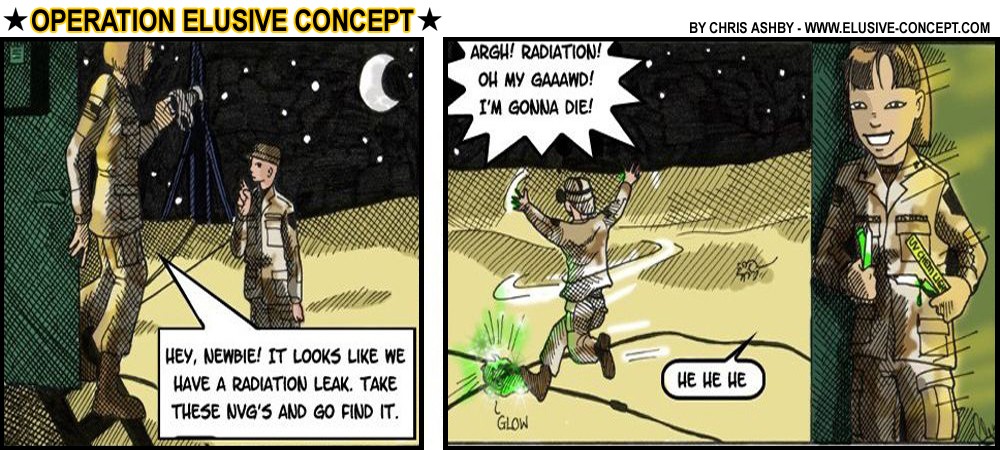
Disclaimer: In accordance with 17 U.S.C. 107, this material is distributed without profit or payment to those who have expressed a prior interest in receiving this information for non-profit research and educational purposes only.
